




Sydney • Melbourne • AdelAide • briSbAne • Perth • CAnberrA Sydney • Melbourne • AdelAide • briSbAne • Perth • CAnberrA FREE NOVEMBER 2013 • melb@indianlink.com.au • www.indianlink.com.au MELBOURNE Ph: 03 9803 0200 • 1 8000 15 8 47 • 0468 389 272 MELBOURNE EditiON DIWALI DIWALI DIWALI Get set for

2 NOVEMBER 2013 www.indianlink.com.au

NOVEMBER 2013 3 INDIAN LINK

4 NOVEMBER 2013 www.indianlink.com.au
INDIAN LINK
PUBLISHER
Pawan Luthra
EDITOR
Rajni Anand Luthra
ASSISTANT EDITOR
Lena Peacock
Sheryl Dixit
MELBOURNE COORDINATOR
Preeti Jabbal
CONTRIBUTORS
Thakur, Minnal Khona, Nancy Jade Althea
ADVERTISING MANAGER
Ashish Chawla 0468 389 272
ADVERTISING ASSISTANT
Nitika Sondhi 02 9279 2004
DESIGN
Danielle Cairis
Proud member of:
Indian Link is a monthly newspaper published in English. No material, including advertisements designed by Indian Link, may be reproduced in part or in whole without the written consent of the editor. Opinions carried in Indian Link are those of the writers and not necessarily endorsed by Indian Link. All correspondence should be addressed to
Indian Link
Level 24/44 Market St, Sydney 2000 or GPO Box 108, Sydney 2001
Ph: 02 9279-2004
Fax: 02 9279-2005

Email: info@indianlink.com.au
www.indianlink.com.au
Looking at Brand India
Pravasi Bharatiya Diwas (PBD) or Overseas Indian Day programs are a wonderful opportunity for the Indian diaspora to connect with their homeland, and more particularly, to the powers-that-be of their country of origin. The regional convention of this annual event is to be hosted by Sydney this year. Much effort seems to have gone in to its organisation under the leadership of the Indian High Commissioner to Australia Biren Nanda. The expected attendance is 600-1,000, well short of the over 11,500 who made it to a recent Bollywood concert, even with average pricing for both events being similar.
PBD Sydney will hold a number of discussions on economic and business options as well as culturally and socially relevant issues. While the talkfest will allow the regurgitation of issues which have always dominated the landscape, what is sorely lacking is an opportunity to put on the table the somewhat tarnished image of Brand India in recent times. For overseas Indians, the water cooler discussions at work continue to be focussed on cricket and Tendulkar, but have now begun to
include news such as the treatment of women as highlighted by the horrific Delhi rape case less than twelve months ago. At the business levels, India’s slow pace in rising up to expected economic standards, as well as issues of bureaucracy and corruption, have begun to crop up too. Representatives of the Indian government here, as much as Indian-origin settlers themselves, perhaps need to spend a bit of time specifically talking about this, and the PBD would have been the perfect platform to do so.
Pravasis in Australia held candle-light vigils and marches in December 2012 in solidarity with the Indian masses that were shocked by the Delhi rape case. Our ears burned as news came in day after day about Delhi’s poor preparation for the Commonwealth Games and even more so about its corruption scandals. Anecdotal evidence of the deeply entrenched corruption and its gaining momentum at various bureaucratic and government levels are a regular lament at every social gathering.
This is the time to bring these issues, as elephants in the room, to the fore. Perhaps the High Commissioner and his team of organisers will facilitate much-needed dialogue on this matter as well.
Meanwhile, Diwali, the Festival of Lights is just around the corner. The
community is already coming alive with the spirit of the festival, with an unprecedented number of celebrations planned this year. In a happy occurrence, a number of mainstream platforms are also organising their own celebrations, and inviting the Indian community to join them. Telstra, Westpac and Commonwealth Bank are all reaching out to the community at large.
Even as community members are beginning to spruce up the home for the advent of Goddess Lakshmi and the entertaining of friends and family, our message goes out to all to enjoy the festivities (perhaps invite a non-Indian neighbour over), and look forward to a new post-Diwali year with optimism and hope.
And finally, a huge thank you to the dozens of readers and supporters who sent in congratulatory messages as we began our 20th year in publication this month. We are buoyed by your encouragement; it further reinforces our commitment to continue to bring you quality reporting on issues that affect us as Indians, as Australians and as Indian-Australians.
A happy, healthy and prosperous Diwali to you all.
Pawan Luthra is the 2012 Parliament of NSW Multicultural Journalist of the Year.

NOVEMBER 2013 5 INDIAN LINK
Amit Dutt, Ritam Mitra, Usha Ramanujam Arvind, Purnima Ruanglertbutr, Tanveer Ahmed, Noel G De Souza, Chitra Sudarshan, Geeta Khurana, Sandip Hor, Aman Dhingra, Saroja Srinivasan, George
PAWAN LUTHRA
EDITORIAL
DIWALI
Diwali at Federation Square
21-26 Oct
Celebrate India Inc. will host Diwali in the heart of Melbourne. Highlights include festival launch aboard a fully decorated Diwali boat on Friday 18 Oct; a five-day free screening of Bollywood films at Fed Square; dance performances; a specially decorated horse carriage playing Indian music; bazaar; workshops, and interactions with mainstream sporting celebrities. Special event on Sat 26 Oct 12noon–9.30pm.
Details: Arun Sharma 0412 183 157, www.celebrateindia.org.au
Diwali dinner
Sat 26 Oct
Wedding-themed Diwali celebration at Metropol Reception, Lvl 1, 370-376 Clayton Rd, Clayton.

Details: Amit Tuteja 0402 848 618.
AIII Diwali
Sun 27 Oct 11.30am-7.30 pm
Sandown Racecourse, 591-659
Princes Hwy Springvale. Details: www.aiii.org.au
What’s on
Wyndham Diwali
Sat 2 Nov 10am-8pm
A multicultural Diwali at Werribee Park, featuring cultural show, food, fashion parades, fashion and jewellery stalls.
Details: 0432 161 933, www.wyndhamdiwali.org.au
Diwali at Benella
Sun Nov 3 11.30am-2.30pm
The Benalla Indian community celebrates Diwali at a familyfriendly community gathering in the grounds of the Swanpool Cinema. Bring a picnic lunch or enjoy refreshments from the cinema’s candy bar or from the Swanpool Store, and relax under the trees in the cinema grounds to experience traditional Indian music, dance and entertainment. Try your hand at rangoli, lantern making and decorative henna painting.
Details: www.swanpoolcinema. com.au/festival.htm
PCV Diwali
Mon 4 Nov 7.00pm sharp Princes Court and Reception, 2249
Princess Hwy, Mulgrave. Highlights include top-end DJ and dhol, professional dance performances.
Details: Tej Panesar 0421 380 700.
Shree Kutch Diwali celebrations
Sat 9 Nov 6pm onwards
Fairhills High School, 330 Scoresby Road, Ferntree Gully, 3156 Vic. Melway ref: 81 K1. Organised by the Shree Kutchi Leva Patel Samaj Victoria and Shishukunj Melbourne. Diwali celebration through dances, plays, cultural program, photoshoots, dinner and live DJ. Strictly non-alcoholic event.
Details: Pravin 0402 684 264.
VSA Diwali Nite – The ‘A’ Bomb Sat 9 Nov 6:30pm onwards
VSA’s Ashwood Hall 21A Electra Avenue, Ashwood. Gaana-shaana, dance-vance,
kids games, adults karaoke, food, drinks, including hot Indian buffet and phool chidiyan
Details: victoriansikhassociation@ gmail.com
ISCF Diwali celebrations
Sat 16 Nov 12pm-3pm
Clayton Hall, 264 Clayton Road, Clayton 3168. Indian Senior Citizens Forum at Clayton invites all to join in celebrating the festival of Diwali. Details: Siri Krishan Auplish on auplishsk@yahoo.com.au
Ballarat Diwali
Sat 23 Nov
Ballarat Showgrounds, featuring cultural events including Bollywood dancing and traditional plays, rangoli, food stalls, a market and fireworks. Details: Amitabh Singh on 0422 028 076.
6 NOVEMBER 2013 www.indianlink.com.au
For full calendar of What’s On listings (nation-wide) check out: www.indianlink.com.au You can also submit your listing online



NOVEMBER 2013 7 INDIAN LINK



8 NOVEMBER 2013 www.indianlink.com.au

NOVEMBER 2013 9 INDIAN LINK
LETTERS TO THE EDITOR
Equality for All
For the Indian community, sexuality in any form is rarely discussed openly and when it comes to homosexuality, it becomes ten times harder. If you have grown up in a traditional family, chances are that you will most likely take those values with you through life, even if you migrate to a western country, like Australia. You might find yourself very uncomfortable in a lot of situations. This could be at work, university, shopping malls or train stations.
In Australia being homosexual is socially acceptable. Homosexual is the term which is used for a male who is gay, or a female who is lesbian. The broader or updated term is GLBT (Gay, Lesbian, Bisexual, Transgender). If you are homosexual, most of the time your family, friends and coworkers are very respectful of your choices. But this might not always be the case if you are from an Indian background. In saying that, it doesn’t mean all Indians are against the GLBT community, but we are talking about the majority. I come from a traditional Indian family and I am proud of it. Being part of that culture has taught me a lot of things. I have so much respect for my culture and tradition. I probably didn’t have very a good opinion about the GLBT community until I got to know a lot of them through work and university. Sometimes we look at homosexuals as people who have
made the wrong choice, which is where we are making the mistake.
Homosexuals are absolutely normal people like us. They share the same feelings and belong to the same society as we do. They deserve the same respect as we would give to any other person of the community. Being homosexual doesn’t disqualify them from being normal citizens.
Australia is a multicultural country and the beauty of this great nation is that we are all equal. No one gets excluded based on their age, nationality, religion, gender or sexuality.
Regardless of your opinion about homosexuality, treat them equal, respect their choices, be genuine and stand up for them if you have to. We are all entitled to an opinion, but that doesn’t mean we should be disrespectful to them.
This year a poll conducted by pew research shows that 79% of Australians are in favour of same sex marriage. Homosexuals must be welcomed with dignity. Every sign of unjust discrimination should be condemned.
You don’t have to accept someone’s choices, but you do need to respect them. Don’t try to change their choices just because you don’t agree. Education should be to promote kindness and compassion.
Jot Singh Kuraby, QLD

Send your letters to:
I’ll always speak in English!
The recent views in the local media in Fiji regarding proficiency in one’s mother tongue and learning a new language or languages have prompted me to share my language learning experiences.
Recalling my childhood school days, l attended a school that had an extremely rigid language policy; my mother tongue was despised in that institution. Speaking in my mother tongue meant losing my dignity and self-respect! A group of us were caught communicating with one another in our mother tongue in the school’s playground during a lunch break and the teacher on duty put us all on detention. We were made to run around the school’s playground for 30 minutes in the mid-day heat. We suffered very badly from extreme heat exhaustion and while doing our punishment we slowed down but the teacher kept on yelling, “You still have fifteen more minutes to go... run!
Run! Run! Fast! Fast! Fast! Don’t slow down! Keep running... keep running till l say STOP!”
My other friends at the school were also trapped in a similar situation, and by ‘desecrating the institution’s sacred language code’ they were made to scrub the school’s corridors, clean the toilets, dig the gardens, and some even had to wear a label around their necks throughout school hours with very large and bold printed message, “I’LL ALWAYS SPEAK IN ENGLISH!”
The school’s snobbish approach and rejection of my mother tongue generated a lot of anxiety in my small village community in Fiji. My parents too were deeply alarmed and so we were sent to another school.
I had five brothers and sisters and every morning we travelled daily by bus from our village to Lautoka Muslim Primary School, a multicultural school which had very effective language learning programmes during my time, where all languages were respected and treated equally.
My head teacher during that time was Mr Mohammed Ishaque, a very inspiring gentleman who was widely respected in the local community. I felt very proud going to that school; l was very happy and comfortable in my new school and l spent eight years there learning languages and other subjects, and was exposed to the community’s values and virtues of self-
discipline, devotion to oneself, respect, civic pride, honesty, hard work, love, compassion, humility and success! The environment was very friendly and motivating and l gained proficiency in Hindi, Urdu, English, and Fijian. At home my parents played a vital role in my education, proficiency in languages and character building. We were exposed to a huge variety of reading materials in Hindi literature and other literacy materials in English and Urdu. By the age of ten l accumulated proficiency in my mother tongue and had read all my community’s literature. The local media in Fiji, which is, Radio Fiji, Fiji Times and Shanti Dut, also had an influential role in my communicative skills. My parents encouraged us to write for the local media too.
There was no shortage of jobs for me when l completed my primary and secondary education. l was approached by the principal of a prominent school in Lautoka to design a remedial reading programme in the school to promote literacy and proficiency in students who were slow learners and had great difficulty in reading, writing and were lacking in other communicative skills.
For me, learning is an ongoing continuous process in life; we learn and acquire new skills everyday and after completing my tertiary education l later enrolled in the adult learning class at University of the South Pacific and studied French and Japanese language too!
I have very liberal views about learning and acquiring proficiency in a new language. The nature and complexity of the human brain are such that we can learn new things at any stage in life. Effective learning and acquiring knowledge and skills in life depend on our own inner potentials too, our determination, and our perception about life. My day-to-day exposure to different social situations and interaction with diverse cultural groups in Fiji have given me a new and brighter perception about my immediate environment; a deep understanding of diverse groups and how their lives operate, their values, virtues, principles, social norms and love for humanity.
Shah Melbourne, VIC
10 NOVEMBER 2013 www.indianlink.com.au
info@indianlink.com.au

NOVEMBER 2013 11 INDIAN LINK
DIWALI DIWALI DIWALI







Most of us have many happy memories of Diwali. Carefree, joyful times spent in the company of family and friends, made more exciting with new clothes, an abundance of festive food and fireworks. We have enjoyed the Lakshmi puja, Bhai Dooj and visiting homes gaily decorated with diyas, lights and rangoli
So what made those Diwalis gone past special? Here, Indian Link asks community members what made the festival truly memorable for them. In this yaadon ki baraat, some recount happy times, others tell of scary incidents, but all are wonderfully nostalgic and we hope, bring a touch of light and laughter to your own celebrations this year.
Sparkling hair!
Preeti Jabbal
This cannot be termed as my favourite memory of Diwali, but it is certainly burnt in my memory as an unforgettable experience. I have always sported long hair which I like to leave open and flowing, especially for special occasions. On top of that, faishan ki maari (victim of fashion) that I am, I refused to add any oil in my hair. My mum (God bless her soul) was forever after me for leaving my hair untied. Her favourite Punjabi dialogue was, “Jadon dekhon jhatta khulya rehnda hai!” which loosely translates as “Whenever I see your hair, it’s a darned ungroomed mess!”
At 14-15, any such pearls of wisdom from parents are generally and rebelliously ignored. I clearly remember the evening when I was around that age, happily celebrating Diwali with my galli mohalle (neighbourhood) ke kids. It was a balmy night and the fireworks could be heard incessantly as the whole town celebrated the Festival of Lights around us. We were all dressed up in our finest outfits and yours truly, Miss Fashion-conscious was in a typical teenage outfit, a dress that barely reached the knees and long hair that reached my waistloose and flowing, and a disaster waiting to happen!
We were playing with some sparklers and the fun thing to do
was to use the candles or lamps to light them up. I was very careful with my hair, holding it safely away from the fire while I lit the sparklers. But suddenly one of my friends’ dad rushed up to me and started attacking my hair with his bare hands. My heart leapt into my mouth at this unexpected action and I just stood there transfixed, trying to makes sense of what had occurred.
Apparently while I was busy lighting a sparkler, a little boy who was standing near me was happily swinging around his sparklers in a semi circle, as was the fun thing to do. Some of the sparks went straight into my hair and it caught fire. The dryness and abundance of it made it more flammable and without me knowing, my hair was crackling up into a bonfire. If that well-meaning ‘Uncle’ (as we Indians tend to call all our friends’ dads) had not had the presence of mind to smother the flames, I would have had to spend the rest of my teenage years in hibernation. Like a superhero he came to the rescue of the damsel with little sense and lots of hair, and saved the Diwali day. I never fail to send Uncle a Diwali card, and I will always be indebted to him for saving me from the shock and horror of a burnt hair, scalp and person. Once my mum got over the shock, the smug ‘I told you so’ look on her face and the constant reference to the incident, ensured that I was well groomed with hair neatly pulled back to avoid trouble, at least till vanity kicked in again and dominated over the unpleasant memory. Needless to say I am a strong supporter of the
safe sparkler/fireworks campaign, especially where little kids are involved. These innocuous looking objects have been known to cause grief to many. If you are planning to celebrate Diwali with sparklers, by all means do so, but ensure that children, no matter what age, are supervised, keep a safe distance from lit sparklers and should certainly not have their hair in the way.
As Preeti celebrates a year of professional success in her leadership role, we wish her another year of living life queensize!

upcoming Diwali celebration. Of course, I got caught up in their enthusiasm and wanted to see them do their dance, etc. And on the actual day, my heart swelled to see them perform so beautifully and take part in all the activities. I am so proud of them!
The Chinmaya Mission program for the day actually touched my heart just as much. They had put so much thought into it all, as they explained to the kids the significance of Diwali. They brought it all down to the level of the pre-teen kids, by means of cartoons, drawings and similar symbolism. The dances, specially designed for the event, were beautifully planned. For safety reasons, there were no lit palms of the little ones, but battery-operated ones instead!
The costumes came specially from India: no hastily pinned together shiny-fabric outfits for our little princesses…


Authentic Diwali Deepa Bhatia

One of my favourite Diwali celebrations in recent times was when I visited my daughter in Canada a few years ago. It was quite an experience for me to see how the Chinmaya Mission in London (the town near Toronto where my older daughter lives with her family) celebrates Diwali annually.
My two young granddaughters are avid Chinmaya regulars and were all abuzz about their







Pandal-hopping Mitu Bhowmick Lange
The idea behind the entire event, it was clear, was to lay a foundation in the minds of the kids of what the Festival of Lights is all about. And to some small extent, let mainstream Canadians know a little about our culture. And both objectives were met, as all the kids came away thinking Diwali is such a ‘cool’ event.
It got me thinking as to what we can do in Melbourne to maintain our age-old traditions, and get our kids involved as well.
Diwali 2013 is going to be an extra special one for Deepa, as two of her children are getting married this year.



My favourite Diwali moments are from my childhood when we were in Delhi. My mother would dress us up with great care. Diwali is also the Bengali Kali puja which meant pandal-hopping with my parents all around Delhi and eating sweets till my stomach was ready to burst!
Bursting crackers till late in the night with cousins and friends, the hot favourite being the ‘rocket’, was a source of much happiness and thrill.
The house would look so festive and bright, like a new bride all dressed up. Lights would be lit a few days prior to Diwali, warming up for the main event. There was always a feeling of sadness when the lights were brought down and the wait for the next year began all over again…





This Diwali will be a special one at the Lange household, as Mitu and Roy celebrate baby Parina’s first Festival of Lights.

12 NOVEMBER 2013 www.indianlink.com.au COVERSTORY
Photo: Creative Art Media
memories associated with it, that it is really nice to reminisce and share a few. I am proud to say that my husband Rakesh Raizada has been instrumental in involving banks like Commonwealth, NAB and ANZ in sponsoring Diwali functions and exposing mainstream financial institutions to this wonderful Indian festival. In one such event that the Commonwealth Bank had sponsored for Australian Indian Innovations Inc (AIII) in Sandown, we were surrounded by media representative who were taking photos of the dignitaries present. Ted Baillieu was the Premier of Victoria during those days, and he was the chief guest. Rakesh and I were in traditional Indian outfits and Rakesh was
delights















































Manpreet Singh





mad moment, he put the turban on Ted’s head! Now Ted has an impressive personality, and the photograph of him with the turban hit many newspapers next day with the title Maharajah Ted It was fun and at the same time, something to be proud of as we shared a piece of Indian culture with the Premier and people of Victoria.

Something similar happened at another Diwali event that was organised by the Bank where the chief guest was former Lord Mayor John So. Rakesh and I realised that there was no Indian music available, so we got the Aussie DJ a CD from my car, and we played it at the event. The Indian Bollywood music had everyone on the floor
True communal harmony Amitabh Mattoo
My most memorable Diwali experience was in 1975, at my home in Srinagar in the beautiful Kashmir valley. We lived in a neighbourhood that had Muslim, Sikh, Buddhist and Hindu homes right next to each other. Unlike today when Kashmir has become synonymous with violence and conflict, in the 1970s the valley was synonymous with religious and cultural harmony and togetherness.

in no time, including Indian High Commissioner Butshikan Singh and Lord Mayor John So, as we urged them to try some Bollywood moves. The Mayor later told us it was the first time he had ever danced to a Bollywood song and even though he liked Bollywood, he never thought he would ever be able to dance like them. He enjoyed the experience and his photograph speaks for itself. Diwali for us is all about sharing our vibrant Indian culture with everyone and spreading the joy and light of this festival with fellow Australians.

This Diwali will be a special one for the Raizadas, as they celebrate the launch of their new venture Ramon Consulting & Financial Services.


On the morning of Diwali in 1975 (I was 13 years old then), all the children in the mohalla first collected money from the elders and then went to buy the best fireworks from nearby Maharajah bazaar, which was converted into huge fireworks supermarket. And in the evening, instead of celebrating Diwali just in our own houses, everyone, Sikhs, Muslims, Buddhist and Hindu families, assembled in the grounds of nearby Amar Singh College, ate together and then watched the spectacular display of fireworks. It didn’t matter which faith we belonged to, or our political loyalties, we all came together in celebrating the victory of good over evil. Those were the days, unimaginable in Kashmir today! It’s a special Diwali for Dr Matto as the AII has just concluded its fifth successful year of operations, and continues to build positive Indo-Oz relations.
There have been so many happy Diwalis, I couldn’t possibly pick one! Ok, let me see, turning all the lights on in the house on Diwali night, but first checking to see there were no fused bulbs and changing them if there were any; helping to line up the façade of the house with electric light strings, which would stay on from just before Diwali to just after Guru Purb, which is equally significant, if not more so for us Sikhs. Then there’s that much awaited afternoon when we would be taken to the shops to purchase our choice of patakas; the endless parties night after night in the week of Diwali as we made the rounds to homes of close friends and family; the special little things I would have for all my cousins, especially as the oldest cousin in the clan; the special moments with each of my brothers on Bhai Dooj (Brothers’ Day). Oh, there definitely were some notso-happy moments which we all still laugh at today, such as when my hair went up in flames from a stray phooljhadi (sparkler), or when my brother burnt his hand! But overall, the outstanding memories are those magic moments of sharing and happiness and nonstop partying… A very Happy Diwali to you. May the diyas enlighten you, may the crackers add a sparkle to you; may the candles fill you with hope, and may your fears go up in smoke! Congrats to Manpreet as she celebrates her Walkley Award nomination and UNAA’s media award for increasing awareness of women’s rights and issues. It’s certainly going to be a happy Diwali for her!
NOVEMBER 2013 13 INDIAN LINK
symmetry to the mango-marigold torans, while giddy sugarcanes propped precariously against jambs.





Rangoli, riotous or regimental, claimed their rightful role in the foreground. Clay lamps were lit in rows in the home, and colourful paper lanterns or Akash kandeels proudly stood in every doorway.

While mothers and grandmothers spent time in the kitchen making sweets like laadu, karanji, shankarpali, chakali and chivda, us youngsters had our own things to do. We used to make a fort called a ‘Diwali quilla’, out of mud, cardboard and upturned clay pots. This tradition from Maharashtra signified the victory of the great Chatrapati Shivaji over the Mughals and kings of other dynasties. The fort was built over many levels and toys from our collection vied for space in this display. GI Joes rubbed shoulders with the Air India maharaja; a clay Marwari seth and his sethani dolls, the South Indian dancing dolls stood incongruously next to varied plastic dinosaurs. Meccano robots and the Magic Sando man in his sleeveless vest were the most unlikely sentinels.
The quilla was as much a part of the preparation for Diwali as


































baths followed by heavy feasting on Diwali goodies or pharal
Little ornamental clay pots filled with puffed paddy, coriander seeds and round airy light sugar batashas candies were placed besides Lakshmi and Ganesh. I vividly remember my mother patiently answering my incessant, curious questions, telling me that this pooja was a thanksgiving gesture, a symbol of prosperity and plenty, which celebrated a bountiful harvest. The paddy puffs symbolised the staple, the coriander seeds stood for all the spice of life and the batashas were representative of the sweet things in life! A lovely explanation for my young mind.
Far away from the idyllic Diwali of my childhood, I now celebrate the festival differently, sometimes not even on its designated day if Diwali falls on a weekday! But we do celebrate! And we cherish these memories while creating new ones for my children, our hearts full of gratitude for the values and experiences our parents have bequeathed on us.
This Diwali will be a special one for Shruti as it marks her VET resources and compliance consultancy company
NEXTEXT’s first year.












Lessons learned Nalin Sharda
A particular Diwali memory sticks in my mind, when I was about 10 or 11. A favourite post-Diwali pastime for us kids was to gather all kinds of leftover stuff from the firecrackers of Diwali night and play around with them. For instance, we would melt them down and try to create more of the cherished patakas for one last splurge. I was doing just this when some of the burning stuff fell to the ground. By instinct I extended my hand to catch it, supposedly to save the floor from burning… well, you can guess the rest of the story!
There’s much I’ve learnt from this incident, I have to say. The first lesson, of course, is that firecrackers are dangerous and they do so much damage every year.
The second lesson, and the one that I share with my research students on a regular basis, is that children are the best researchers, and so we must learn to think like them while doing research. My mum must have told me innumerable times that firecrackers are dangerous, but did I remember her words? No, I had to try it out for myself! It was probably my first ever science experiment, to investigate the behaviour of chemicals when strong heat is applied to them!
Another lesson is something my dad taught me, and which I practice to this day. If you’ve suffered a burn, don’t rush to put it in cold water. Instead, put it as close to a heat source as possible, that is, as close and for as long as you can tolerate. You’ll notice that after some time, the pain will ebb away, and this is when the healing process starts. You will also find that no blisters will form if you do this. I actually used this method only recently when I burnt my hand after picking up a very hot plate that sat next to the stove in my kitchen.


Daughter Pallavi’s recent Bollywood success ensures that this Diwali will be a special one for the Sharda family

Compiled by Rajni Anand Luthra and Sheryl Dixit



Bushfire appeal



As we celebrate the Festival of Lights, residents from New South Wales are ruing the destructive power of nature as the state and its brave firefighters battle to stop the fiery inferno that has destroyed homes and wildlife, and threatened lives.



Among the festivities, Diwali is also symbolic of generosity, so Indian Link urges you to donate to the cause of the NSW bushfire victims and its firefighting services. Charities such as the Salvation Army (http://salvos.org. au) and Red Cross Appeal (http://redcross.org.au/disasterrelief-and-recovery.aspx) are asking people who want to help NSW bushfire victims to donate cash instead of food or clothing. Donating cash is more helpful as it gives bushfire victims choice over what to purchase.
Petbarn is also running an appeal in conjunction with the RSPCA to assist rescue and recovery efforts aimed at wildlife, pets and livestock. You can donate to this appeal at all Petbarn stores. The RSPCA is also appealing for online donations to help RSPCA inspectors help animals affected by the bush fires https://www.thankq.net.au/donate/V230/Donate1.aspx .
People across the country are doing their best to help the victims of the NSW bushfires, let’s do our bit to help too.
14 NOVEMBER 2013 www.indianlink.com.au
COVERSTORY

NOVEMBER 2013 15 INDIAN LINK


16 NOVEMBER 2013 www.indianlink.com.au

Change to bring about change
Just a dollar a day can change the lives of disadvantaged children living with their prison inmate parents, reports AMIT DUTT
Change for change”, is how Dr Kiran Bedi described her concept of bringing about an improvement in the life of a child through one of her charities, India Vision Foundation (IVF).

“Small change put aside every week can accumulate into a few hundred dollars by the end of the year,” said Dr Bedi, while addressing a gathering of keen sponsors for IVF in Melbourne. “This is enough to rebuild the life of a child of an inmate in jail and provide them with education to bring them into the mainstream of everyday life”.
IVF is the brainchild of Dr Bedi, and was started when she received the Ramon Magsaysay Award in 1994. It began its work inside Tihar prison by setting up a bread-making unit for the welfare of the inmates. Soon it identified the most vulnerable of the lot in the prison system, children belonging to families where a history of criminality
and imprisonment exist. “These children are at the highest risk of being negatively influenced, growing up in the prison amongst hardened criminals and becoming one of them,” stated Dr Bedi to Indian Link, describing her experience with children in the prison.
In India when a mother goes to jail, her children are allowed to live with her in prison until the age of six. However, nothing changes after that age, with children continuing to live amongst convicted killers and arsonists in the jail system. “Someone needed to break the cycle,” said Dr Bedi. “At six and after, a child’s mind is very tender, absorbing every bit of information and the happenings around them. So much so, that by the time these children reached the age of eight to ten, they were well versed with the Indian Penal Code (IPC) and the convictions attached with each section of the IPC”. A very disturbing thought indeed, on the
kind of citizens we are bringing up in the country.
Starting from humble beginnings, the first step was to initiate a welfare program for such women and children in Tihar Jail. The crèche-cumtraining program began in collaboration with IVF’s sister concern Navjyoti India Foundation (NIF). Working closely with donors with the sole aim to rehabilitate the children of prison inmates (above the age of five years) through residential schooling, the foundation has been working hard to nurture the talents and interests of these children through constructive training programmes, to inculcate in them social, moral and ethical values and responsibility.
“Contributing a dollar a day will go a long way not only in supporting these children, but towards making a future for them and turning them into responsible citizens. In fact, we have children coming out of
this programme who are now qualified engineers and chefs, putting their share back into the programme,” claimed Dr Bedi. So what does she see in the future, for this programme? “Well, it will depend on people who want to do the right thing and invest in the future of these kids and pull them out of this vicious cycle of crime and imprisonment”.

“With administration costs being less than 15% of your donation, we make sure that bulk of the contribution lands up for the kid,” reiterated Dr Bedi.
With these words, Dr Bedi shot off to one of her many speaking assignments. An inspiring day indeed, in the company of the Iron Lady who showed a side little known to rest of world. IVF was launched in Australia in 2012. For information contact Ranjana on: 0401 000 600. Dr Kiran Bedi
18 NOVEMBER 2013 www.indianlink.com.au
CO mmun ITYSCE n E
DO YOU NEED HELP WITH…
Criminal Law?
Divorce?
Violence?
Family Law?
Commercial Law?
Elder Law?
Family violence?
Business Lease Disputes?
Separation and Divorce?
Buying a House or Business?
Neighbourhood Dispute?
Credit fraud?
Immigration?
Child Maintenance orders?
Appeals in criminal law matters?

Court Appeals?
Power of Attorney?
Intervention Orders?
Driving Licences cancelation?
Last Will?
Traffic offences?
Study in Australia?
Criminal Defence?
Traffic offences?
Domestic abuse?
Affidavits?
Parenting orders?
Court Orders?
Car Accidents?
Imprisonment?
Fraud Matters?
Harassment?
Sexual offences?
Student visa?
Financial Agreements?
Statutory declarations?
Theft?
NOVEMBER 2013 19 INDIAN LINK
DON’T RISK IT – CALL THE EXPERTS We are Australian Educated Australian Lawyers with a combined experience of more than 25 years Dinesh Weerakkody LLB D LEGAL LAWYERS & MIGRATION AGENTS (MARA 0742843) WWW.DLEGAL.COM.AU Mob: 0425 725 570 EMAIL: info@dlegal.com.au FAX: 03 9808 2243 4 Burwood Highway, Burwood, Vic 3125
Local government reps join Dasara festivities
A

good turnout of dignitaries, devotees and community members ensured a successful AUMSAI celebration
AUMSAI Sansthan
Australia celebrated Dasara 2013 and Shirdi Sai Punyathithi celebrations at the Kingston City Hall in Moorabbin recently. Devotees, community members and a large number of local dignitaries attended the popular event. The festivities were marked with a myriad of cultural items, traditional food, community award presentations and a plethora of speeches.
Joining in the celebrations was an impressive list of guests including Ms Elizabeth Miller, MP Bentleigh; Ms Inga Peulich MLC Member for South Metro Region, Parliamentary Secretary for Education; Mr Nirmal Chowder, Acting Indian Consul General; Mr Chin Tan, Chairperson VMC; Ms Lorraine Wreford, MP Mordialloc; Mayor Cr Ron Brownless OAM, City of Kingston; Mayor Cr Amanda Stapledon, City of Casey; Mayor Cr Jamie Hyams, Glen Eira City Council; Mr Srini Chidambaram, Commissioner VMC; Cr Karina Okotel, Glen Eira City Council; Cr Geoff Gledhill and Cr Paul Peulich of City of Kingston. Offering a warm welcome and keeping in tradition with AUMSAI hospitality, all the guests were presented with handcrafted shawls and mementos.

Entertainment items set the tone for the rest of the evening. The event officially commenced

with a short prayer and mantra recitation by the priest that was accompanied by music from the Nadaswaram (musical instrument).
The dignitaries were encouraged to participate in the traditional ceremony, and auspicious vermillion was applied to their foreheads. MC Aviti Sharma then introduced and welcomed each guest to the stage. The speeches that followed were mercifully kept brief, wherein a majority of the guests commended AUMSAI for their active involvement in the community and extended their greetings for the festival season.
After the formal part was over, the festivities continued and the audience was entertained with items presented by local artists and amateurs. Popular amongst the entertainment section were patriotic songs sung by Nawal Moudgil and his student, some wonderful renditions by Saffron Grove singers Shriram Iyer and Bobby Beebob. A graceful Moon Dance was performed by the Chinese group Ya Hui, and a vibrant bhangra item was presented by Melbourne Bhangra Regiment.

Also well received were the Ganesha Dance by Chandana Galeti, group dance by Akshara Yannam and team, followed by a children’s fashion show, and foot tapping performances on various medleys. The Indian classical section saw some talented performances in Kuchipudi and Bharatnatyam by Rachana
Natyalaya and Nadanalaya Dance
Academy. The audience also enjoyed some live music from Ajax Band.
The AUMSAI Sansthan held the event in association with Planet Insurance and Financial Planning, and with the support of the Victorian Multicultural Commission. Mr Rampal Reddy Muthyala, AUMSAI Treasurer and Life Time Trustee, owner of Aarya Supermarket (Member of South Metropolitan Regional Advisory Council, Victoria) was instrumental in getting local representatives to attend the festivities. During the event, community service awards were presented to Mr Charles Harris and Dr Jagvinder Singh Virk for
their invaluable and continuous support to community. Towards the end of the event, AUMSAI Founder and Trustee Anil Kolanukonda offered the vote of thanks on behalf of the trustees and committee members of AUMSAI Sansthan.

20 NOVEMBER 2013 www.indianlink.com.au
CO mmun ITYSCE n E

NOVEMBER 2013 21 INDIAN LINK
Communitys C ene
Master brushstrokes
A talented young artist is felicitated for her simple, yet stunning artwork


With her artistic submission Bird on Wire, young Simran Singh from Glen Waverley won the under-18 category in the recently held Waverley Art’s Society’s Annual Exhibition. Children were asked to submit two artworks, and Simran’s submission of Bird on Wire was the winner. Simran started art classes this year, tutored by her teacher Anita Van Grootvelde. The classes are held at Mount Street Neighbourhood house with the support of the Waverley Arts Society.

The Waverley Arts Society (WAS) held their 43rd Annual exhibition at the Highway Gallery in Mount Waverly from 6-31 October. The exhibition was well attended. Simran received a membership from WAS for being selected as a winner. Her parents Dr. Ina Takkar and Dr. Harpreet Singh are proud of their daughter’s talent and are delighted with her achievement.
Formed in 1970, the WAS
is a community for artists that encourages and promotes art within the city of Monash and surrounds. A major exhibition is held each year by WAS where artists from all ages and skill levels get to display their artistic work. The exhibition also provides opportunities to view and purchase reasonably priced
Patelscope from Mumbai to Melbourne
Comedy and parody, besides music and singing added to Devang Patel’s impressive repertoire

The multitalented singer, actor, dancer and comedian Devang Patel was in Melbourne recently, to perform at a traditional garba (dandiya) event during the festival of Navaratri. Satya Times and Gujjus Café & Chaat House organised the popular event at Oakleigh Recreation Centre. This was Devang Patel’s first performance in Melbourne and judging by the response he evoked, there could be more in future.
Known as the ‘King of Dandiya,’ Devang has created his own distinct style through a combination of comedy, rap and music. Among his popular songs are super hits like Patelscope, Ande Ka Funda, Stop That, Meri Marzi, Madhuri milli rastein mein etc. Besides comedy and singing, Devang has acted in several films and has also produced and directed films. His shows are enormously popular in Gujarat, and his fame is now spreading to other parts of the world. Prior to the auspicious Navaratri festival, this year, Devang’s Australia tour saw him perform in Melbourne, Sydney, Perth and Adelaide.
According to Bharat Shah from Satya Times, the 1100 strong audience at Oakleigh Recreation Centre thoroughly enjoyed Devang’s interactive performance, especially his parodies. Combining traditional and modern dandiya songs, Devang had the audience hooked on the dance floor. “He has truly brought the essence of Mumbai to Melbourne,” gushed one of the dancers in the audience, as she twirled around the floor in her splendidly colourful traditional outfit.


22 NOVEMBER 2013
quality artwork by established and emerging artists.
Simran Singh

NOVEMBER 2013 23 INDIAN LINK
VISAS
VISA IMMIGRATION SERVICES AND SUPPORT

Migration is a Big Decision and it comes with little planning and expert advice. My team ensures to give you ethical and professional advice on a Fixed Price.
• SKILLED VISAS (189, 190, 489 and 485)
• EMPLOYER SPONSOR (457, ENS, RSMS)
• FAMILY (Spouse/Partner/Defacto, Parents)
• STUDENT VISA (Applications and Extension)
• MRT APPLICATION & REPRESENTATIONS
• SKILL ASSESSMENT
For limited time whole Citizenship application for just $400.
CALL FOR DETAILED CONSULTATION



MEENU RAJPUT @ 0402 645 063
MARA AGENT MARN -1172983
Offices in North and South of Brisbane
24 NOVEMBER 2013 www.indianlink.com.au
Indian entrepreneurs honoured by MIBC



Australia’s growing love for all things
Indian was evident at Melbourne Indian Business Club’s (MIBC) gala event held at Hilton On The Park recently. Over 250 guests enjoyed cricket, Bollywood and warm Indian hospitality, as more than 30 local Indian businesses were recognised for their excellence and contribution to the Victorian economy. In what makes for an encouraging sign of the Indian migrant’s increasing interest in Australian politics, MIBC also pledged $20,000 to the State Labor Party in support of their campaign for the upcoming state elections in 2014.
Leader of the Opposition in Victoria and MP for Mulgrave, Daniel Andrews was the keynote speaker for the evening. He touched upon several issues that are currently affecting Victorians and criticised the State Liberal Government for their incapability in delivering proper plans and policies for the health, transport, education and manufacturing industries.
Mr Andrews then went on to articulate the strength of the Labor Party and sought support from those present, for Labor to achieve its vision in the 2014 State Elections. Other dignitaries included Liz Beattie MP member for Yuroke; Allan Griffin, MP Federal Member for Bruce; Jude Perera, State Member for Cranbourne; Maria Vamvakinou MP, Federal Member for Calwell; Cr. Peter Maynard, Wyndham City Council; Lee Tarlamis, State Member for South-Eastern Metropolitan region; and John Pandazopoulos representing the Electorate of Dandenong, who also officiated as the MC for the formal part of the evening.
The $20,000 that was pledged by MIBC was raised through auctions of memorabilia as well as personal contributions from supporters of Labour Party who attended the event. Councillor Intaj Khan who, along with MIBC team, was instrumental in organising this event, encouraged people to join the Labor Party if they wished to have their voice heard and have more of a say in politics. He urged people to subscribe to the aims, objectives and policies of the Labor Party if they want a government that has a plan for
problems and a vision for the future.
Four enterprising Indian businessmen, Luckee Kohli, Councillor Intaj Khan, Rizwan Ahmed and Alex Singh, created the MIBC to act as a lobbying group for the burgeoning Indian business community in Melbourne and surrounds. Sharing the objectives of MIBC with the audience Mr Kohli said, “The MIBC came into existence with the primary objective of providing a platform to entrepreneurs from India in Australia, where they can network, build relationships, share experiences and promote their business. We intend to create opportunities for these interactions as well as recognise commendable efforts through awards.”

This was the cue for the awards ceremony to begin and one by one, each business owner was invited on stage and acknowledged for their efforts in creating investment opportunities and employment in Victoria. The recipients hailed from a wide variety of industries including hospitality, education, energy, leisure and manufacturing.
Indian actress and model Rajlaxmi Roy added the glamour factor to the networking event, along with Melbourne Renegades cricketer Fawad Ahmed and former Hawthorn AFL player

Paul Salmon. Their fans eagerly approached them for photos and autographs during the breaks that were provided between the multiple speeches and awards.
The Bollydazzler Dance Troupe enlivened the evening with their dance performances on a medley of Bollywood songs. Towards the end, Alex Singh offered the customary vote of thanks to the parliamentarians and all those who
NOVEMBER 2013 25 INDIAN
LINK
Business
More than thirty businesses are recognised for their contributions to the Victorian economy
Photos: Ravinder Singh Jabbal
PREETI JABBAL
Rakesh Kawra bids Melbourne adieu
The Consul leaves behind good friends, reports SIMMI BAKSHI
The Indian Australian community in Melbourne bid farewell to Consul (SCWO) of India Mr Rakesh Kawra, at an event organised by the Federation of Indian Associations in Victoria (FIAV). Mr Kawra is expected to take up his new assignment in Cairo (Egypt) shortly.
The farewell dinner was held at Tandoori Junction Indian restaurant in Glen Waverley, recently.
It is never easy to say goodbye, more so if the person leaving is as community-minded and supportive as Mr Kawra has been. His popularity was evident from the heartfelt farewell wishes that he received from the guests.
Leaders and representatives from various organisations deeply appreciated Mr Kawra’s contributions towards strengthening relationships within the Indian community in Melbourne. He was also commended for his efforts in improving bilateral relations between India and Australia. Amongst the speakers were FIAV President Mr Vasan Srinivasan, CEO of Yarra City Council Vijaya Vaidyanath, President of FIWAA Mrs Madhu Dudeja, and Leigh Tran from Victorian Police Multicultural Unit. Tonee Sethi from G’Day India, Neeraj Nanda from South Asia Times and Preeti Jabbal from Indian Link represented the media.

President of Hindi Niketan
Dr Shard Gupta, President of Telugu Association Mr Pavan Matampally, President of Gujarati Association Bharat Shah and President of Melbourne Malayalee Federation Dr Shaji Varghese were unanimous in their acknowledgement of Mr Kawra’s exceptional service during his tenure in Melbourne.
Special mention was made of his willingness to assist the community in matters related to travel visas and emergencies.
Mr Kawra thanked the speakers for their wishes and said that he was overwhelmed with the respect and warmth that he had received from the community in Melbourne.
“I have been posted to many different parts of the world, however, I will always cherish my experience in Melbourne as one of the best I have had so far,” he said.
Mr Kawra went on to commend the FIAV and its leadership under President Mr Vasan Srinivasan, for their commitment towards bringing the Victorian Indian community together. “Ever since my arrival in Melbourne, my interaction and experience with the FIAV has been parallel to none other,” he said. According to Mr Kawra, he hoped to see more organisations and individuals
in Victoria, like the FIAV, that are dedicated towards uniting and strengthening the Indian community in Australia.
Mr Kawra’s wife Mrs Mona Kawra and his daughter Richa accompanied him to the farewell

PRoPeRty sALes ADVisoRs
Do you have what it takes to be a Sales Manager, then we would love to speak to you. We currently have a fantastic opportunity to join a market leader in Property Investment Sales and Property Management.
Are you Self Motivated and Successful Property Sales Professional with exceptional networking skills & the desire to work hard and earn over $150,000?
The successful applicant must have proven Sales Experience with matching results. A current Agents Representative License or Estate Agents License is required. Retainer and Commission is Negotiable and Commensurate to Experience and Results. Immediate Start Required.
THIS IS NOT A JOB BUT A CAREER OPPORTUNITY
dinner. Beyond his official duties as the Consul, Mr Kawra has made many friends who will fondly remember him and would like to see him return to Melbourne at some stage. As one of the guests Mrs Shobha Gupta
said, “We hope you return either on another official assignment or to retire peacefully in the most liveable city in the world. Till then it is not goodbye, it’s just fare thee well and we hope our paths cross again”.
There are no problems without solutions
INTERNATIONAL CLAIRVOYANCE AND SPIRITUAL HEALER
Spiritual healer of International fame SUCCESS
Pure and powerful clairvoyance with supernatural gift from god. Surprising results and deeply effective success and a worldwide reputation. He can help you to solve your problems, bringing love back in your life for the better, to stop unwanted union, love, marriage, health care, successful in job and business, exam, court case, work, cure impotence become joyful. Remove nightmares, misfortune and family problems. let me destroy your problems before it destroys you!!!!
26 NOVEMBER 2013 www.indianlink.com.au
Communitys C ene
Photos: Ravinder Singh Jabbal
IN
FEW
gUARANTEE
0405 515 401 or 0497 533 909 Put an end to all your worries by phoning Mr Malik malikhelp@hotmail.co.uk
jUST
DAYS AND 100%
MOBILE:
Please email gino@mbic.com.au or fax 03 9886 9591



NOVEMBER 2013 27 INDIAN LINK
Dazzling Diwali

The Festival of Lights kicks off in the most liveable city in the world
It is going to be Har Din Diwali in Melbourne for the next few weeks, with multiple celebrations of the festival of light being held in various parts of the most livable city in the world. With each year the Diwali festivities around our city are getting bigger, better and more creative as many organisations are jumping on the bandwagon to host the celebrations. Most prominent amongst the Melbourne Diwali events is the cultural extravaganza held at Federation Square by Celebrate India Inc. Again this year thousands of people are expected to attend this popular festival that is scheduled to run from October 21-26.
An innovative launch, held on October 18, kicked off Celebrate India’s mega celebration for 2013. A select group of guests comprised mainly of festival sponsors, partners and dignitaries were invited to enjoy a leisurely cruise on the Yarra followed by a sumptuous dinner. While the




guests could watch the city lights as they cruised down the Yarra, many people in the city would not have missed the beautifully illuminated boat announcing the forthcoming celebrations.

Celebrate India Inc. is a not for profit Victorian Organisation that was created in 2006 with the idea of sharing the vibrant culture of India with the wider community of Victoria. The dedicated team of volunteers from Celebrate India, led by Arun and Jaya Sharma, has been celebrating Diwali in the heart of Melbourne since its inception. The event created history by getting permission to illuminate major landmarks and iconic buildings in Melbourne for the first time ever for an Indian festival.
Arun Sharma one of the founding members and chairman of Celebrate India Inc. shared the joy and meaning of Diwali in his welcome speech during the recent launch. “Diwali is celebrated with illumination that is symbolic of victory of light over darkness or good over evil,” said Arun. “Our team has worked collectively to organise this inspirational and entertaining Diwali and it is our privilege to be able to spread the message of friendship, harmony and goodwill to the wider
community in Victoria”. With the support of the Victorian and Indian Government, as well as sponsors, the festival promises to offer enjoyment for the whole family and will be jam packed with activities. Leading up to the main event on October 26, free Bollywood movies will be screened for five days at Fed Square and a horse drawn carriage will immerse the city in the spirit of Diwali. The main event will be a day long celebration where the Federation Square will be transformed with light displays, food stalls, dance, music, arts and craft followed by a fireworks display. Celebrate India has also partnered with the White Ribbon organisation and they will be spreading the message of ‘No Violence Against Women’ by conducting oath taking ceremonies and raising funds during the main event.
During the launch of the festival the audience also heard from Chin Tan, Chairperson of The Victorian Multicultural
Commission and Jude Perera, State Member for Cranbourne. Both speakers commended Celebrate India for their efforts in organising this major festival and for putting Diwali celebrations on Melbourne’s cultural calendar. They invited the community to participate in the festival and wished everyone a joyous Diwali.
Nirmal Choudhary, Acting Consul general of India in Melbourne and Rakesh Kawra Consul (SCWO) launched a souvenir during the boat cruise launch that provided details of all
the activities and acknowledged the sponsors of the festival. Sponsors include Melbourne Airport, SBS radio, Air India, Fed Square, Telstra, Mind Blowing Films, White Ribbon, Metro, Fiji Hindu Foundation, Maharajah’s Choice, RACV, Richmond Football Club, Gaura Travel, Cricket Victoria, City West Water, Sweetmix Roadshow and Minuteman Press Narre Warren. Indian Sun is the Victorian Media Sponsor and Indian Link is the National Media Sponsor of the event.

28 NOVEMBER 2013 www.indianlink.com.au D i WAL i
PREETI JABBAL
Photos: ifitographer Chandu

NOVEMBER 2013 29 INDIAN LINK
Frustration-free Foogi
By RITAM MITRA
It’s the typical office problem: you need to schedule a meeting between your team, yourself and several external stakeholders. You know when your colleagues are free, you’ve just checked your shared calendar on Outlook. But it takes 20 emails or a dozen phone calls to try and find a bit of common free time with others, and soon enough, you’ve spent hours trying to organise just one short meeting. A new app, Foogi, aims to free up time for more important things by making the act of scheduling meetings a cinch, and the idea was the result of a very long bus trip.
Foogi takes advantage of the smartphone age, allowing for the sharing of all types of calendars, including Outlook, Google and iCal, across all mobile operating systems, such as BlackBerry, Android, iOS and Windows Mobile. But its main strength is that it only shows others free spaces in your calendar, so they can’t see who else you’ll be have meetings with. Although Foogi has not been formally launched yet, 60 users have already downloaded the free app from Google’s Play Store, with an iOS launch imminent. Foogi founder and CEO, Amit Jaiswal, wants to use this early period in the app’s cycle to learn exactly what users want and make the product as good as it can be.
“Once we’ve figured out exactly what is the easiest way for Foogi to work for users, we’ll start marketing it,” he says. “By next month it should be available on all platforms, and that’s when we’ll have a proper launch”.
As recently as this year, Amit was working as a business analyst, a job which involved regular meetings with clients and other stakeholders. Having been in the corporate/profit environment from a young age, Amit was more than familiar with the pain of trying to schedule meetings. Although most organisations allow for calendars to be shared between colleagues, for confidentiality reasons, sharing your calendar externally is usually not permitted. You obviously don’t want anyone else to see the meetings you have lined up for that week. “Outside the company,
it was a nightmare,” says Amit. “If you try to meet with five people, you call the first person up and then call the second person, and then you might have to go back to the first person again. You put in 4-5 hours’ work for just an hours meeting”.
It was in this backdrop of mundane to-ing and fro-ing that Amit went travelling for six months in South America, and had an epiphany. “The only way to get around was by bus, so there were 15-hour bus trips. On such long trips, your brain comes up with new ideas. I realised that the (scheduling) problem was solvable now because of mobile technology. I realised that there’s an easy way to do this!”
Everyone’s syncing their calendars onto their phone, and if I create an app, it will have an easy way to get access to any calendar. I basically built the tool to solve my own problem,” he reveals.
Although he has a background in computer engineering, having built several Windows and web applications in the past, Foogi is Amit’s first attempt at a mobile app. He’s enjoyed the experience so much that he’s given up his regular job as a business analyst, and he refuses to look back. “I have no regrets at all,” he says. “But it’s not easy. Part of the reason why I gave up my job was that while I was working

parts that are very boring, like organising meetings and so on. And even more than that, it’s the Gen Y dilemma where we feel like we can do more with our lives, and we’re all kind of dissatisfied with our jobs, even though we are really well paid and we should be grateful”.
Amit’s theory behind the job dissatisfaction that he says is typical of Gen Y, is two-fold. Jobs offer no opportunities to grow, and Gen Y’s have nothing to fight for. “In all the jobs I’ve had you don’t really grow, you don’t really learn, you take the skills you have and you just do it. It kind of felt like stagnation, it felt like death,” he says. Meanwhile, in generations before us, says Amit, events such as war and Indian independence gave our ancestors something to strive towards.
“They had a sense of accomplishment and achievement,” he avers. “Even our parents’ generation, they came from nothing and they worked really hard to give us this awesome lifestyle. They came to Australia, leaving their families behind, and sacrificed a lot to give us everything”.
Amit continues, “But for us, we graduated and straight away we started earning as much as our parents. We lack that feeling of
accomplishment and achievement, because it came so easily. If we’ve got none of those obstacles (that previous generations faced), we should be achieving a lot of things but why aren’t we?”
There are a number of perks that come with starting your own company. To Amit, the most rewarding aspects of starting Foogi have been the constant learning curve, the intimate startup community that has supported him throughout the whole process, and the opportunity to build his own team. Groups such as Alive Mobile have provided advice and mentoring to Amit, as well as introductions to industry leaders and potential clients. In light of receiving no form of support from the Australian government (“It’s all talk,” says Amit), he recognises that the close-knit start-up community was crucial to getting Foogi on the road.
Meanwhile, Amit’s Foogi team has now grown to eight members, including three partners and four interns. “Unfortunately I’m not paying any of them. But the people are like-minded and they didn’t really like the profit lifestyle. It’s great, but there’s also a sense of responsibility, I need to start making money with Foogi as soon as possible so that I can pay these great people,” he says.
“It was really exciting being offered a position with Foogi,” says Shikha Jaipuriar, a 20-year old PR and Media Intern at Foogi. “It’s a really unique opportunity, especially being able to take charge and handle projects on my own, which I’d never get to do in any other work setting. I think it’s definitely taught me a lot more about the business and shown me how to be more hands-on”.
Foogi is just one of a few ideas in Amit’s pipeline. Along with a connection at Alive Mobile, he’s also working on a disaster
Foogi allows for the sharing of all types of calendars, including Outlook, Google and iCal, across all mobile operating systems, such as BlackBerry, Android, iOS and Windows Mobile

To Amit, the most rewarding aspects of starting Foogi have been the constant learning curve, the intimate start-up community that has supported him throughout the whole process, and the opportunity to build his own team
recovery app that will help those affected by events like the 2004 Boxing Day Tsunami locate their loved ones in the immediate aftermath of the disaster. Amit’s entrepreneurship is certainly an inspiration to others seeking a more exciting and innovative existence.

30 NOVEMBER 2013 www.indianlink.com.au te C hno Logy
A long bus trip in South America resuled in a ground-breaking new app that will simplify external meeting requests
Amit Jaiswal



NOVEMBER 2013 31 INDIAN LINK
Green energy solutions for urban poor
Eradicating energy poverty is the challenging task of a group of young eco warriors
grinding poverty, the importance of organisations like Pollinate Energy really hits home. The low would definitely have to be the realisation that many of the people in the communities have no legal rights and their fate and homes are under constant strain and uncertainty. The high was most certainly the people: the Pollinate Energy founders and their vast energy for this cause, the young professionals from India, Australia and New Zealand with their fresh ideas and enthusiasm, the Pollinators who welcomed us in and guided us through our community experiences, and the communities themselves with their warmth and kindness.
By USHA RAMANUJAM ARVIND
As global economies lobby to contain spiralling energy consumption, fringe communities in developing countries have quite literally been left in the dark. In today’s world of tablets, touch screens and texting, ironically, many still face acute energy poverty. According to estimates, 1.3 billion people worldwide have no direct access to electricity, of which 400 million live in India alone. As the sun sets, their lives come to a grinding halt.
There is a widening gulf between the haves and the havenots. Lack of proper infrastructure and poor awareness has forced those living below the poverty line in rural and semi-urban areas to rely heavily on age-old practices like kerosene lamps and coal-fired stoves that are not only harmful to the environment, but also pose a serious health hazard.
In a bid to improve the living conditions of such Indian families, a group of young eco warriors have been striving to create safer and more affordable lighting solutions. Known as Pollinate Energy, for this dedicated team, social impact outweighs profit.
Embracing sustainable production and consumption concepts, Pollinate’s Young Professionals Program has been regularly sending experienced volunteers to educate and train local communities in India and thereby empower them.
Pollinate Energy co-founder and director Emma Colenbrander said the program which has a far-reaching social vision, brings together Australian professionals
with Indian micro-entrepreneurs to help promote the distribution of safer, more affordable clean energy solutions to urban poor communities. Besides removing the burden on unsustainable fuels, the programme also aims to increase overall productivity and foster economic independence.
Global technical management services provider AECOM is one of the Pollinate’s first corporate partners. AECOM employees, Sydney-based landscape architect Belinda Dods, environmental engineer Rosanna Sanderson (Brisbane) and engineering geologist Johannes Wilson (Christchurch), recently volunteered in Bangalore as part of Pollinate Energy’s Young Professionals Program. During their India stint, the trio worked closely with local entrepreneurs, or ‘Pollinators,’ mentoring them as they introduced solar lanterns and smokeless cookstoves in the local community.

“AECOM sees ‘social businesses’ like those championed by Pollinate Energy as a solution to environmental, energy and economic challenges,” AECOM Chief Executive, Australia New Zealand, Michael Batchelor stated.
“Our people are extremely passionate about improving liveability, sustainability and connectivity, in their own communities and around the world, and we are glad to support innovations and programs that do so,” he added.
What drew Dods to the project is Pollinate’s strong focus on innovation. The former international trade and business finance professional left behind a thriving career in the corporate sector to follow a passion in landscape design and architecture. Her interest in sustainable technologies also led her to compete in the International Solar Decathlon, where her team
finished third. More importantly, the experience certainly triggered a passion for innovative and sustainable design as well as desire to use this to drive social change.
Indian Link caught up with Belinda Dods to find out more about her involvement with Pollinate Energy’s Young Professional Programme.
Indian Link (IL): What prompted you to volunteer for Pollinate programme? What was the experience like?
Belinda Dods (BD): I’ve always been interested in social businesses and was eager to find out more about how Pollinate Energy is achieving its goal to ‘eradicate energy poverty’. So when my manager approached me to apply, I was really excited.
The program totally exceeded my expectations. We had incredible speakers join us to discuss the finer points of social business, and this helped us gain a greater appreciation for the problems and the solutions out there.
As well as the work we completed in the communities, another facet of the program was to develop a part of Pollinate Energy’s business. Another Sydneysider, Lorenn Ruster and myself were tasked with promoting advocacy for Pollinate Energy’s cause in Australia. Pollinate Energy has teamed up with some very clever local talent; design firm Amigo & Amigo and public engagement firm Wildwon, to create the very first solar powered VIVID Festival lighting installation. We will be liaising as Pollinate Energy Ambassadors to see this exciting project come to fruition. Our roles as Ambassadors will also see us more broadly assisting with their operations in Australia.
Having travelled through India previously, I had an idea of what it would be like, but faced with such
just a matter of time before they infiltrate the communities on a large scale. The initial solar light products are at the point now where they almost sell themselves. People can see the benefits for their own eyes and have come to trust the Pollinators and their products.
IL: Who were some of the other participants and what did they bring on board to the project?
IL: Tell us more about your specific role with this project? What did it involve?
BD: We were partnered with a ‘Pollinator,’ and accompanied them to communities, helping develop sales strategies to improve and grow their respective businesses. The current program sees us introducing fuel-efficient cook stoves into the community. The cookstoves burn at least 50% less wood and emit at least 50% less smoke, so are better for peoples’ health (people mostly cook inside within the midst of clouds of smoke) and economically better, saving them money on fuel. Having discussed our approach for the day, we head out as a team to a slum community to do demonstrations, making chai and explaining the benefits of the product. As a group we assess our strategy and propose changes for the next day. The second part of our role sees us involved in working bees. The three groups look to bring in a source of income that can subsidise the social part of the business by creating pictorial guides for the products to be used by the predominately illiterate users and advocating Pollinate Energy’s work.
IL: How did the team work to educate people on urban fringes about cost effective renewable energy resources? What was the reception to this novel idea?
BD: It is difficult with any new product to convince the community that it does all it is said to do, but it only takes one person to give it a go to gain the trust of a community. One woman cooking chapati tested the cooking time on both their traditional fires and the new fuel-efficient cookstoves; the benefits where obvious with the cookstove taking far less time and using far less wood. So it’s
BD: From India, Neelima Jain, Keshav Lakshman and Sneha Kariyappa were part of our team; and from Australia there was Holly Hyder, Lorenn Ruster and Rosie Sanderson. Johannes Wilson, one of my AECOM colleagues alongside Rosie, is from New Zealand. I can honestly say that everyone had a unique talent that came to light during the program, from Sneha’s ability to befriend everyone in the communities and make them feel comfortable, to Rosie’s unique insight into the area having previously worked for Engineers without Borders in Chennai. We had strategic consultants, engineers, and landscape architect. It was refreshing to hear all the different points of view and to learn from each another. We were all there for the right reasons and had so much to learn from each other.
IL: What images of India did you come away with, what were your personal experiences?

BD: Colour, noise and spices! Everywhere you go, India surrounds you with activity, be it the noise of the horns on the street, the brightly coloured saris everywhere, or the smells of so many different spices mingling in the air, which themselves act as a welcome respite from the pollution, rubbish and dust. At first it all hits you and feels overwhelming, but as you adjust you see more of what is the same and less of what is different.
For example, we made tea one evening, and as the ladies in the community laid out a mat for us to sit on, I cuddled one of their babies. Asking the few questions of Kannada I have picked up along the way, we drank tea and laughed with them, recognising a common joke made about wanting us to adopt their children. They have come to Bangalore to make a better life for their families, and it’s a wonderfully humbling experience to sit and share tea and try to begin to understand the daily pressures they face.
Details: www.pollinateenergy.org
32 NOVEMBER 2013 www.indianlink.com.au
in D i Ao Z






NOVEMBER 2013 33 INDIAN LINK *Terms & Conditions apply Training/Support provided Cleaning Kit & Uniform provided. Contracts Available in some areas*. Ph: 1800 676 068 www.coverall.com.au From $8K deposit* to own a commercial cleaning Franchise.
Kudankulam, defence, energy top Manmohan-Putin talks
India and Russia recently marked a very special phase in their close ties as the first Russian-built reactor in Tamil Nadu’s Kudankulam was connected to the electricity grid in south India, and is poised to produce electricity while a commercial deal for the third and fourth reactors are near complete.
As Indian Prime Minister Manmohan Singh and Russian President Vladimir Putin met in the Russian capital of Moscow where the temperatures are near freezing, both stressed on the closeness of their ties in all spheres, including cooperation in economic, energy, defence, counter-terrorism and people-to-people contact.
Manmohan Singh and Putin held restricted level talks for over four hours in the Green Drawing Room of the Grand Kremlin Palace, with their close aides, who included from the Indian side Foreign Secretary Sujatha Singh, National Security Advisor Shivshankar Menon, Indian Ambassador Ajai Malhotra and senior officials of the Prime Minister’s Office.
Putin, addressing reporters after the delegation level talks and inking of five agreements later, said he was happy that the first reactor had gone critical and was poised to be connected to the electricity grid “in a few hours”, while the second one if to go critical in early 2014.
On the third and fourth reactors, on which a commercial deal has got stuck due to concerns over India’s civil liability laws, Putin said both sides “have plans to construct the third and fourth units”.
Manmohan Singh said that “we have directed our officials to resolve all outstanding issues at the earliest”.
Sujatha Singh, addressing newspersons later, said the first unit is to produce 300 MW of electricity from the night of October 21. She said there were “legal issues” concerning the third and fourth units which were being sorted out.
The joint statement mentions that besides units three and four, both sides have agreed to cooperate “in the construction of additional nuclear power plant units at Kudankulam site as well as in the construction of Russian designed Nuclear
Power Plants at new sites in the Republic of India”.
Taking major steps to enhance energy cooperation, both sides have decided to set up a joint study group to examine the possibility of directly transporting hydrocarbons to India through the land route.
While India already has stakes in the Sakhalin and Tomsk fields for hydrocarbons, India and Russia have also decided to jointly explore for oil and gas in the Arctic region.
In defence, where both sides are close partners with India sourcing a major chunk of its hardware from Russia, both Putin and Manmohan Singh mentioned the completion of the refitting of the aircraft carrier Admiral Gorshkov, rechristened Vikramaditya, which is to be handed over to India in mid November.
Their defence cooperation has transformed from buyer-seller to co-design and co-production, especially in the Fifth Generation Fighter Aircraft and the Multi Transport Aircraft.
Both sides are to collaborate in manufacture of Russian built Mi-17V-5 helicopter, which was extensively used during rescue operations in the Uttarakhand flood tragedy earlier this year, said the foreign secretary.
Manmohan Singh and Putin discussed Afghanistan, and how to “prevent the effects of terrorism from spilling over”. India has made sizeable contribution to infrastructure development in violence-hit Afghanistan.
During their discussions on regional issues, Iran and Pakistan figured. Both sides discussed Syria and India commended Russia’s move to defuse the crisis when the US was planning military strikes over alleged use of chemical weapons by President Bashar al Assad.
Punjab probing ‘goonda’ tax, illegal mining: Badal
The Punjab government is investigating allegations of “goonda” tax being levied by certain vested interests in illegal mining in the state, Deputy Chief Minister Sukhbir Singh Badal said in Chandigarh recently.
He said illegal mining was being tackled expeditiously in the state and strict
instructions had been issued to register cases in this regard in case of any complaint.
Badal told media here that he was “personally keeping a tab” on illegal mining, besides issuing strict directions not to spare anyone indulging in this.
“An investigation is on to probe the allegations of goonda tax,” he said.
Referring to cases of illegal mining, allegedly at the behest of senior ruling Akali Dal leaders, Badal said that though the illegal mining was happening across the country, the maximum number of cases had been registered against illegal miners in Punjab.
The goonda tax is being allegedly levied by a mafia on people engaged in illegal mining in Punjab and runs into several lakhs of rupees daily, sources in the trade said.
Indian-American proposes Silicon Valley approach to governing
In the aftermath of the US government shutdown, a former Indian-American Obama administration official has proposed “bold” reforms to make government more efficient, transparent and responsive with a Silicon Valley approach to governing.
“We need bold government reform right away,” declared Rohit ‘Ro’ Khanna, a lawyer and former commerce department official, who is making a bid to oust fellow Democrat Mike Honda, seven-term incumbent House member from California’s 17th District.
“I am pushing a reform agenda against special interests to hopefully change Congress,” he said addressing a gathering in his constituency which is home to a range of technology companies, a day after the US government reopened after a 16-day standoff between Democrats and Republicans over budget and raising the US debt limit.
“Relieved that the shutdown is over after 16 long days,” he tweeted. “Let’s hope Congress never repeats this again,” he said proposing what he called “five steps” to change Congress.
The steps included refusing donations from political action committees (PACs) and federally registered lobbyists, refusing Congressional pay raises, end of Congressional pension system, banning
legislators from lobbying for five years after leaving office and taking special interestfunded trips.
“These proposals will help turn our members of Congress back into the representatives of the people that they’re supposed to be,” Khanna said.
“As a son of immigrants, I would certainly fight for immigration reform,” said Khanna.
President Barack Obama has made fixing the “broken” immigration system a key priority of his administration this year.
To make the government more efficient and transparent, Khanna suggested “a Silicon Valley approach to governing, leveraging innovative technology wherever possible”.
The proposals encompassed; post government spending online, make government data machine-readable, consolidate duplicative federal agencies and programmes, cut government energy expenses and improve cyber security.
Khanna has received the endorsements of several high-profile Silicon Valley figures, such as Facebook’s Sheryl Sandberg and Yahoo’s Marissa Mayer in his bid to oust Honda.
The two face off in a Democratic party primary in June 2014 before the November 2014 election.
Khanna also again outraised Honda in the third quarter with $504,450 against Honda’s $385,000. He finished the quarter with $1.9 million on hand, according to his campaign.
Khanna had made a $1 million-plus haul last quarter, which he ended with $1.7 million in the bank.

Jhumpa Lahiri among US National Book Awards finalists
After losing out on the Man Booker Prize, Indian-American author Jhumpa Lahiri has made it to the finals of the 2013 US National Book Award in fiction for her new novel, The Lowland
Pulitzer Prize winning Lahiri’s tale of two brothers set in Kolkata of the 1960s figures in the finals with four other works in the fiction category.
These are: The Flamethrowers by Rachel Kushner (Scribner); The Good Lord Bird by James McBride (Riverhead); Bleeding Edge by Thomas Pynchon (Penguin) and Tenth
34 NOVEMBER 2013 www.indianlink.com.au
PHOTO: AP
A Christie’s employee surveys Indian artist Jitish Kallat’s Public Notice 2 (painted fiberglass, in four thousand four hundred and seventy-nine parts), which reinvokes the speech delivered by Mahatma Gandhi on the eve of the historic 240 mile ‘Dandi March’, in London. The piece features in the “Thinking Big” auction sale of contemporary sculpture and installation, a joint venture between Christie’s auction house and the Saatchi Gallery
in D i A n ne Ws
of December by George Saunders (Random House).
In a review of her latest novel, the New York Times noted, “Jhumpa Lahiri first made her name with quiet, meticulously observed stories about Indian immigrants trying to adjust to new lives in the United States, stories that had the hushed intimacy of chamber music”.
“The premise of her new novel, The Lowland, in contrast, is startlingly operatic,” the influential US daily said calling it “certainly Ms Lahiri’s most ambitious undertaking yet”, that “eventually opens out into a moving family story”.
Born in London, 46-year-old Lahiri, who lives in New York’s Brooklyn, is the daughter of immigrants from West Bengal.
She is the author of three previous books. Her debut collection of stories, Interpreter of Maladies, won the Pulitzer Prize and the PEN/Hemingway Award.
Her novel The Namesake was a New York Times Notable Book and was selected as one of the best books of the year by USA Today and Entertainment Weekly, among other publications.
The Namesake was also adapted into a film of the same name by acclaimed filmmaker Mira Nair.
Her second book of short stories, Unaccustomed Earth, was named one of the ten best books of the year by The New York Times Book Review.
At the Nov 20 NBA awards ceremony in New York, each winner in the Young People’s Literature, Poetry, Nonfiction and Fiction categories will receive $10,000, while the other finalists will receive $1,000.
The judges considered more than 1,400 submissions for this year’s prizes. To be eligible, a book must have been written by a US citizen and published in the US between December 1, 2012, and November 30, 2013.
Improved air conditioners can save India 60,000 MW
The India-US climate cooperation agreed to during Prime Minister Manmohan Singh’s recent summit meeting with President Barack Obama will also include a focus on improving the energy efficiency of air, conditioning in India, which has the potential to avoid as many as 120 large power plants of 500 MW each, and to help avoid brownouts and blackouts. More importantly, it has the potential to significantly reduce the import of fuel for power plants, thereby reducing the vexing issue of the current account deficit that the finance ministry and the new Reserve Bank of India governor are trying to tackle.
The preliminary calculations based on study by the Lawrence Berkeley National Laboratory, Berkeley, show that such reduction in import of the fossil fuel can be much more than announced under the increase in import duty on gold and other electronic appliances, as urgent measures.
Air conditioners could add as much as 140 GW to peak load by 2030. The new IndiaUS Collaboration on Smart and Efficient Air Conditioning and Space Cooling is intended to advance policies and innovation to drive mass deployment and rapid uptake of high-efficiency cooling equipment and technologies to capture significant energy savings.
The crowning achievement of the bilateral summit, among the proactive measures to tackle climate change, has been to immediately convene India-US Task
Force on the dangerously potent hydro fluorocarbons (HFCs) to discuss, inter alia, multilateral approaches to phase down these gases which have global warming potential of nearly 2,000 times more than carbon dioxide and whose consumptions and emissions are growing at the rate of more than 15 percent.
Manmohan Singh, Barack Obama and Chinese President Xi Jinping, over the last few months, have stepped up their trinity leadership on the complex global challenge of the climate change on top of the ‘Yes, we can’ list. The leaders also noted that they “are committed to support the full implementation of the agreed outcomes under the United Nations Framework Convention on Climate Change (UNFCCC) with its ongoing negotiations”. They strongly welcomed the efforts of the UN secretary general to mobilise political will through 2014 towards the successful adoption of a postKyoto protocol or an agreed outcome with legal force applicable to all parties by 2015, during a global meet that France is to host.
The India-US bilateral agreement includes cautious but definite practical steps and multilateral approaches for dealing with climate change. This includes using the expertise and the successful institutions of the Montreal Protocol to phase down the consumption and production of HFCs based on economically viable and technically feasible alternatives. There will also be provision to grant the incremental cost of the technology transfer and grace period for developing countries like India and China.
This is the key principle of the “common but differentiated responsibility” that India has advocated and successfully defended even for the Montreal Protocol, under which India has already benefited by about $300 million and a grace period of 10 years as compared to the phase-out timetable of the developed countries, to adopt and assimilate the latest efficient technologies.
Manmohan Singh and Obama also envisioned the possibility that HFCs remain within the scope of the UNFCCC and the Kyoto Protocol for accounting and reporting of emissions of these powerful green house gases. The partnership between India and the US on HFCs has topped up the cascading developments this year, in May the countries
of the Arctic Council endorsed action on HFCs by the Montreal Protocol at their ministerial meeting in Sweden. Also in May the EU proposed that the UNFCCC encourage the parties of the Montreal Protocol to phase down HFCs.
In June, Obama and Xi agreed to support this approach. This was followed by support for the proposal from the small island nations of the Pacific in August, from the 34 countries of the Climate and Clean Air Coalition to Reduce Short-Lived Climate Pollutants in early September, and most recently, from the leaders of the largest economies in the world, the G20.
Phase-outs of ozone depleting refrigerants under the Montreal Protocol have revolutionised the refrigeration and air-conditioning industry globally. The momentous improvements in energy efficiency, for example in refrigerators and central air conditioning to the extent of 50-70 percent have already reaped major economic and environmental benefits, particularly in emerging economies of India and China. The industry is now heralding similar benefits for the alternatives to HFCs that would play an important role in catalysing further much-needed energy efficiency gains.
The UN Environment Programme and the World Meteorological Organization and other scientists estimate that cutting HFCs and the other short-lived climate pollutants can cut the rate of global warming in half, cut Arctic warming by two-thirds and cut warming in high elevation regions of the Himalayas and Tibet by at least half.

Dinosaur remains found in Maharashtra
Fossilised dinosaur bones and eggs of gigantic creatures that measured around 1820 metres and weighed 10-13 tonnes, have been discovered from the Salbardi area, around 60 km from Amravati in eastern Maharashtra, a geologist said recently.
The discoveries have been made after nearly six years of efforts by a team led by AK Srivastava and his doctorate student RS Mankar, both from the Department of Geology, SGB Amravati University.
“These remains have been found in the
sedimentary rocks, geologically known as ‘Lameta Formation’ deposited during the Maastrichtian (Late Cretaceous) period,” said Mankar.
Following detailed studies of the discovery, they have interpreted that around 66-71 million years ago, there was a huge lake in which these Lameta sediments were deposited, Srivastava said.
During that period, a species of dinosaur, Titanosaurus Colberti, belonging to the Sauropod Family also inhabited the region and laid the eggs, Mankar explained.
The dinosaurian remains now exist in the form of small fragments of bones and complete eggs of the animals, which are firmly fixed in the rocks and hence irretrievable, said Mankar.
The work on the bones and discovery has been published in the latest issue of the prestigious journal Current Science, Srivastava said.
From the finding, the geologists have presumed that the Titanosaurus Colberti was a giant reptile measuring around 18-20 metres long and weighing up to 13 tonnes.
It was herbivorous animal with a short and deep neck, long forelimbs and a short tail, but could not survive after the Late Cretaceous period due to hostile conditions which developed due to high temperatures and release of hazardous gases during the volcanic activity forming the Deccan Trap Basalt.
Mankar said this is not the first dinosaur remains in have been found in India and earlier, there have been discoveries from Nagpur, Chandrapur, and now Amravati in the state.
Besides, more finds have been made in Jabalpur, Madhya Pradesh and Kheda district of Gujarat, which has reported the largest number of discoveries in India.
“The latest discovery in Amravati highlights its presence from a new area indicating that these giant creates ruled much geographical area than was previously believed. Accordingly, it has attracted the attention of the country’s scientific community working in dinosaur related areas,” Srivastava said.
NOVEMBER 2013 35 INDIAN LINK
IANS
PHOTO: AP
A Kantapada villager in Jajpur district, Orissa, rescues food bags on15 October 2013. India’s most powerful cyclone in 14 years left a trail of destruction along the eastern coast and killed at least 22 people. The biggest evacuation in the country’s history, involving a million people, was credited with saving many lives
The magnificence
Delhi-based artist Gigi Scaria’s new exhibition Dust, at the Ian Potter Museum of Art, takes viewers on a captivating journey through the beauty of India’s desolated salt deserts

fulfilment.
Scaria is usually associated with complex images of megacities that are the result of economic and construction booms, where vehicles, buildings and telecommunication lines are emphasised, which reflect his
concern with the rapid excavation of the land.
“When I came to Delhi I began thinking about its impossible systems, size and mechanisms,” says Scaria. “That was when I discovered that these are huge issues... it’s troubling that we can’t treat our environment properly”. However, Dust takes a different approach; it pictures the geography of the Indian landscape in its raw and glorified form, where nature seemingly overpowers population.
“It can feel as if I have depopulated the spaces, although I haven’t actually ‘done’ anything to them. If there are no people in a photograph, I haven’t ‘deleted’ them, they were never there’, says Scaria.
The exhibition features a largescale painting, a video-sculpture installation and large-format immersive photographs of sandy plains, white salt lakes, and the cracked mud of droughts past. What unifies the collection of works are the crisp horizon lines, unnamed locations, the man-
imagery of sedimentary textures; dune, dust, salt, sand, silt, sludge, and the enormity of the landscapes. These elements suggest landscapes that could be anywhere, such as Russia, or a part of the United States, South America or even the arid heartland of Australia.


While Scaria has never ventured into the Australian outback, he has gained familiarity and interest with Australian cities while residing in Melbourne in 2012 as a Macgeorge Fellow during the Australia-India Year of Friendship. During this time, he exhibited Prisms of Perception at the Ian Potter Museum of Art and travelled around Victoria, and by road to Canberra. He took inspiration from the vast geography of the regions, culture, human interventions in the land as a result of the gold rush in Victoria, and from histories of migration.


Scaria naturally compares
the Australian landscape with the landscapes of his past, or childhood memory in his home state, Kerala which is densely settled, but also lush and tropical.
“When you explore places that are distinctly different, which have no connection with your past, you compare ‘your’ landscape with the new landscape in front of you,” says Scaria. “We make this comparison when we move from one city to another, one territory or nation to another”.
His photographs of “India’s outback” are a response to the enormous Australian landscape.
Dust illuminates the artist’s
travels to inhospitable locations, including the Rann of Kutch, a salt desert situated on India’s south-western border with Pakistan; and the sands that meander around Jaislamer, a city in the Thar Desert in Rajasthan, also on India’s border with Pakistan. Scaria visited these remote places upon his return home from Australia, where he captured approximately 700 photographs, in which 17 appear in the exhibition. Scaria has ‘beautified’ the sites of dispute, focusing attention on his solitary retreat and sensory experience as an adventurer, rather than
AR ts
Gigi Scaria
of India’s vast deserts
imbuing the photographs with any political tenor. They reflect an introspective search, the passing of time and the power of nature and isolation.
Put simply, in Scaria’s understanding of the world, “you travel best when you put away the map, and embrace the land most completely and find the way only by losing it. This is where the mystery happens”.
Indian curator Ranjit Hoskote poetically describes the visual experience in his essay on the exhibit, as “The crunch of boots on salt-encrusted ground; the cloud mirrored in brackish water;


the onrush of wind barely stopped in its track by rock outcrops; the expanse of drought-fissured fields”. Standing amidst Scaria’s images, that is precisely what you feel, captivated in their spatial and aural expanse, lost wandering in their ambiguity, yet connected to their hint of familiar spaces.
Many of Scaria’s photographs are devoid of people, yet they convey evidence of massive industry, depicted in the cultivation of salt, imagery of power lines and heavy machinery.

in his village in Kerala, Scaria was unaware of the scale of India’s cities until he moved to New Delhi to study a Master of Arts at Jamia Millia Islamia in 1995. Unsurprisingly, the sprawling city of New Delhi became the impetus for much of his art that examines pressing issues in contemporary India; extensive development and human dislocation, amid the voracious force of the nation’s rapid urbanisation.
Dust is also a testament
Gigi Scaria Land faded, 2013 inkjet print 100 x 150 cm
© Courtesy the artist
Gigi Scaria Dust, 2013 inkjet print 100 x 150 cm
© Courtesy the artist
to Scaria’s ongoing relationships with the Ian Potter Museum of Art and with the Australian art industry.
In January 2013 Scaria was a participant in the Australia India Institute artists’ retreat in Jaipur, India. A celebrated contemporary Indian artist, Scaria represented India at the 54th Venice
Biennale in 2011 and has participated in an admirable number of international solo and group exhibitions, and prestigious residency opportunities in India, Germany, America, Hungary, the Republic of Korea and the Republic of Trinidad and Tobago. Projects such as Dust provide critical opportunities for sharing cultural knowledge among a new generation of Indian artists with Australian communities.

Dust is at the Ian Potter Museum of Art, University of Melbourne, from September 18 to February 2, 2014.
Gigi Scaria Systems of support, 2013 inkjet print 100 x 150 cm © Courtesy the artist
Gigi Scaria
Time out (detail), 2013 inkjet print diptych, each 150 x 100 cm © Courtesy the artist
In the exhibition, Scaria examines the relationship between the “social spaces” that millions of people occupy, and the distant landscapes many seek for spiritual fulfilment

Why do South Asians love political dynasties?

South Asian cultures still defer to traditional authority, while Western cultures strongly question it
By TANVEER AHMED
Afew weeks ago, on a cold, blustery evening in Sydney, close to fifty people gathered in a seminar room at the University of New South Wales (UNSW). They were predominantly Bangladeshi men in their forties and fifties. Most worked as taxi drivers or in restaurants, in contrast with the professional and skilled migration in the majority of the South Asian community.

Their purpose was to honour Mr Tarique Rahman, the son of Khaleda Zia exiled in the United Kingdom. He had published a book from a range of contributors complimenting his ideas of a grassroots revival in Bangladesh, and extolling his virtues as a future leader. The night involved speeches from several political figures, including former Liberal candidate for the seat of Kingsford Smith Professor Michael Fenely, and Pakistani born NSW Greens Upper House MP Mehreen Faruqi.
What was striking was the reverence and devotion shown towards Mr Rahman, in spite of him having no discernible worldly achievements, other than being the son of a former leader. The crowd regularly burst into cries of ‘Bangladesh zindabad!” (Long live Bangladesh), a cry common in both Pakistan and Bangladesh.
tradition. “We have never had anything quite like the Kennedys,” says ANU fellow Norman Abjorensen to the Crikey website, “but there have been political families prominent on all sides of politics, like the Playfords (Thomas II and Sir Thomas IV), Downers (Sir John, Sir Alec and Alexander), Creans (Frank, Simon and David) and the Anthonys (Larry, Larry Jnr and Doug)”.
But there are few regions in the world so powerfully tied to dynastic rule than the countries of Pakistan, India and Bangladesh. At the heart of this trend lies relationships and outlooks towards authority. Asian cultures still tend to defer to figures of authority and elders and emphasise duty, while Western countries celebrate the questioning of traditional authority. The sociologist Max Weber, known for popularising the notion of the ‘Protestant Ethic’ categorised authority into legal, traditional and charismatic types. It appears in countries like India and Pakistan, we still have great respect for traditional forms of authority such as those with links to former leaders. This is similar to monarchs, where there was a belief that a king or queen had authority tied with God or higher powers from their birthright, regardless of any worldly qualifications.
Asian cultures still tend to defer to figures of authority and elders and emphasise duty, while Western countries celebrate the questioning of traditional authority
The behaviour of the crowd was a reminder of the great power and endurance of political dynasties in the South Asian region, with political families dominating the landscape, if not holding the key positions of power. The Nehru dynasty in India is one of the most enduring political families that ruled the country for 37 years across 3 generations. Jawaharlal Nehru ruled from 1947 to 1964; his daughter Indira Gandhi was Prime Minister during 1966-1977 and again in 1980-1984; and her son Rajiv Gandhi was Prime Minister during 1984-1989. Rajiv’s son Rahul Gandhi is a rising force and is tipped to be a future leader.
There are of course, the Bhuttos in Pakistan, whose family’s shadow continue to threaten the stability of Pakistani politics at every turn. More recently, the youthful son of Asif Zardari and Benazir, Bilawal, has been rapidly elevated to the Chairman of the Paksitan People’s Party.
Both female leaders in Bangladesh, Khaleda Zia and Sheikh Hasina, derive their authority from their links with past male leaders, former Prime Ministers General Zia and Mujibur Rahman.
Political dynasties have resonance everywhere, not just in the developing world. Take for example the Kennedys or Clintons in the US. Australia does not have the same
Professor Mark Thompson is an academic at the University of Hong Kong and studies political trends in Asia. He believes the weak institutional structure of countries within South Asia are a key reason for the endurance of dynastic authority.
“Political dynasties are modern hybrids in which elite political aims are linked to popular norms of charismatic legitimacy… they provide key advantages in a context of weak institutions or institutional decay,” he says. There is no reason that a relative of a politician should not enter politics. It is no different to taking over the family business in some respects and of course, there is much knowledge handed down to children, regardless of what jobs their parents do.
But to what extent is a reliance on dynasties a marker of immaturity and a society that remains highly stratified from a class or social basis? In many respects, political dynasties legitimise the status quo, continue to attach privilege to birth and dilutes the progression towards healthy democracy. For all the positives our culture has towards embracing authority and our elders, we have too much deference to authority and hierarchy for its own sake.
There needs to much greater scrutiny and outright cynicism whenever a relative of a prominent political family seeks to acquire power through entitlement and not achievement.
38 NOVEMBER 2013 www.indianlink.com.au
o P inion
When one
creates distress for governments
By NoEL G DE SoUZA
Several countries have bi-cameral systems. That is, they have two houses in their parliaments. Currently, there are three countries which have entered into crisis mode because one house is trying to undo the will of the other house: America, Italy and Australia.
The United States has shut down its government, except for essential services. This is because the House of Representatives insisted in adding clauses concerning Obamacare to what is essentially a financial bill. After protracted negotiations, President Obama threw down the gauntlet and shut down almost the entire Government of around 800,000 public servants. This has now been reduced because a law was found concerning financing for the military.
anti-corruption court or ICAC in New South Wales.
In the United States, the first task of an incoming President is to literally appoint thousands of public servants. It is a new government from scratch. Such appointments can take some time and important cabinet positions need vetting from the legislative chambers (the Senate and the House of Representatives). This is especially true in the first term of a Presidency.

In Australia, both the existing Senate which will be in office till the middle of next year, and the newly elected Senate, threaten to be antagonistic to the new Abbott government and its legislative programs
President Obama decided very quickly after he took office to appoint some Republicans in his Government. It was a question of acquiring some well experienced staff who had a deep knowledge of the problems that the nation faced, such as of the wars in Afghanistan and Iraq.
Currently, the Obama administration is facing a crisis as the House of Representatives is stubbornly refusing to permit the Government to borrow money to pay salaries to its employees.
In Italy, former Prime Minister Berlusconi had withdrawn his members of Parliament from the current Prime Minister Letta’s coalition government. Berlusconi, troubled by court judgements against him, has called for fresh elections but President Napolitano insists that that would be the last resort. As we go to press, Berlusconi, troubled by an internal party revolt, has softened his stand.
In Australia, both the existing Senate which will be in office till the middle of next year, and the newly elected Senate, threaten to be antagonistic to the new Abbott government and its legislative programs.
The more we look at democracies, the more we could be perplexed by their differences. When Australia opted to copy the Senate system from America, it still left a legacy of the British system almost intact and that was the public service. India is similar.
Incoming governments like in India and Australia inherit a system of public service hierarchies which would supposedly help it to run the country and more importantly, to draw up legislation to implement its programs. There is assuredly a fund of knowledge and expertise in such a system, but there could also be animosity as the appointees might be inclined to an outgoing government that had appointed them.
Similar situations have existed in Australia, such as during the Whitlam era. At that time the GovernorGeneral sacked the Whitlam Government because it could not get supply through the Senate.
The Abbott Government is currently in the phase of addressing the problem of manning the public service. The Liberal-National Coalition had made no secret that it would reduce the number of public servants. Soon after taking office, the Climate Commission, headed by the outspoken Tim Flannery, was dismissed. The members of that Commission have decided to form a sort of think-tank and use an internet site to inform the public about the growing concerns regarding climate change.
The next exodus of high profile members from the public service has been the resignation of the entire board of the National Broadband Network.
The world is currently watching with anxiety as the impasse between the Senate and the House of Representatives in the USA does not show any signs of being resolved
Then there is the possibility that there is corruption in some quarters; in some areas there might be a system for getting approval for projects such as for planning a new suburb, or for exploring a new mine. Some examples of this have been identified by the

The Minister concerned, Malcolm Turnbull, has not accepted their resignations.
The world is currently watching with anxiety as the impasse between the Senate and the House of Representatives in the USA does not show any signs of being resolved. That battle is over a bill to enable the public service to be adequately funded.
President Obama says that the Republicans are holding a gun to the head of the government, to get whatever they want.
The unacceptable bill has not been put to the vote presumably because a number of Republicans have revolted, and wish to end the impasse. If the USA cannot get the bill passed, the entire country could get downgraded and it will find difficulty in borrowing money. This could set off a global financial crisis, the effects of which could threaten the economics of many nations in Europe and Asia.
NOVEMBER 2013 39 INDIAN LINK
AUSTRALIAN BULLION COMPANY WISHES EVERYONE A HAPPY DIWALI AND A PROSPEROUS NEW YEAR
o P inion
Major countries of the world face turmoil as their governments cannot agree on legislative programs
house


40 NOVEMBER 2013 www.indianlink.com.au



NOVEMBER 2013 41 INDIAN LINK
Eighteenth century intrigue
 By CHITRA SUDARSHAN
By CHITRA SUDARSHAN
Increasingly, many talented young writers are writing books that throw a different light on a past that seems so far removed from the present, that it is hard to imagine it existed at all. Perhaps readers of vernacular novels will be more familiar with them: there are of course, wonderful historical novels in Kannada, Tamil, Marathi, Hindi et al, about the lives in the Court of the Vijayanagar Kings, the Marathas, the Cholas and so on. It is a slightly unusual setting for an Anglo-Indian novel, especially for an English-born novelist, but The Pagoda Tree by Claire Scobie, belongs to this genre.
It is a novel set in eighteenthcentury Tanjore and Madras at a time when the British East India Company was gradually increasing its sway over the length and breadth of India, waging wars, manipulating and plotting the overthrow of local rulers, even engendering famines at whim.
This novel evokes fairly successfully, the zeitgeist of that era, through the telling of the story of Maya, a young girl destined from birth to be a devadasi. She comes from a long line of devadasis who perform for the temple and the King, and afford company to men who can afford them. Scobie’s protagonist is a talented and beautiful girl, and it is expected that she will have an extraordinary career as a courtesan in the court of the prince of Tanjore himself. However, Tanjore itself is in the throes of



change, Hyder Ali and the Nawob of Arcot have their eyes set on conquering this prized possession, and there are other bad omens looming on the horizon. It is in the midst of this upheaval that Maya is forced to flee her home and head to the port city of Madras where the worlds of the British East India Company and local middle men and traders collide.
Maya’s Indian patron, Mudaliar, is a violent tyrant, and when still under his thumb, she meets
Thomas Pearce, an ambitious young Englishman and East India Company functionary, who has travelled to India to make his fortune. Maya turns to him for love, but it is forbidden and comes at an enormous cost. Thomas, who is torn between his lust for Maya, his affection for India, and family loyalties back home, treats Maya no better.
Thomas abducts their little daughter and ships her alone back to relatives in England. He is not altogether a very attractive
of the novel that he has drowned leaves one emotionless. Will Maya retrieve her daughter in England and pass on her training as a dancer to her? It is for the reader to find out.
Scobie became fascinated by the devadasi institution after a visit to Tanjore (now called Thanjavur), where she saw carved on the walls of the eleventh century ‘Big Temple,’ the Brihadeeshwara Temple, the names and addresses of 400 devadasis. She was fascinated by these women and the lives they had led, women who were in all likelihood celebrated artistes of their day. She also visited the present Prince of Thanjavur, Babaji Raja Bhonsle (who runs an e-publishing company and is rather desperate for more tourists to visit his decaying palace, as he can’t afford the upkeep); she has researched the places, both old areas of Madras such as Mylapore, and the newer foreign enclaves in the port areas of the city in depth, and has woven them into her narrative.
It is all there in the novel, imperial merchants manipulating rulers for profit, well-meaning
This novel evokes fairly successfully, the zeitgeist of that era, through the telling of the story of Maya, a young girl destined from birth to be a devadasi
Christian evangelists trying to ‘save’ heathen souls, and young East India Company men falling for beautiful and talented local girls, with disastrous consequences. Claire Scobie is an awardwinning journalist who has lived and worked in the UK, India, and has been living in Sydney since 2001. She writes for the Telegraph, the Observer, and the Sydney Morning Herald, among others. In 1997 she won the Catherine Pakenham Award for Best Woman Journalist of the year. Her first book, Last Seen in Lhasa, is a memoir based on her friendship with a Tibetan nun, and won the Dolman Best Travel Book Award in 2007. The Pagoda Tree is her second book, and first novel.
Scobie became fascinated by the devadasi institution after a visit to Tanjore where she saw carved on the walls of the Brihadeeshwara Temple, the names and addresses of 400 devadasis
42 NOVEMBER 2013 www.indianlink.com.au
B oo K s
The life of a devadasi in British India is chronicled in this interesting historical novel
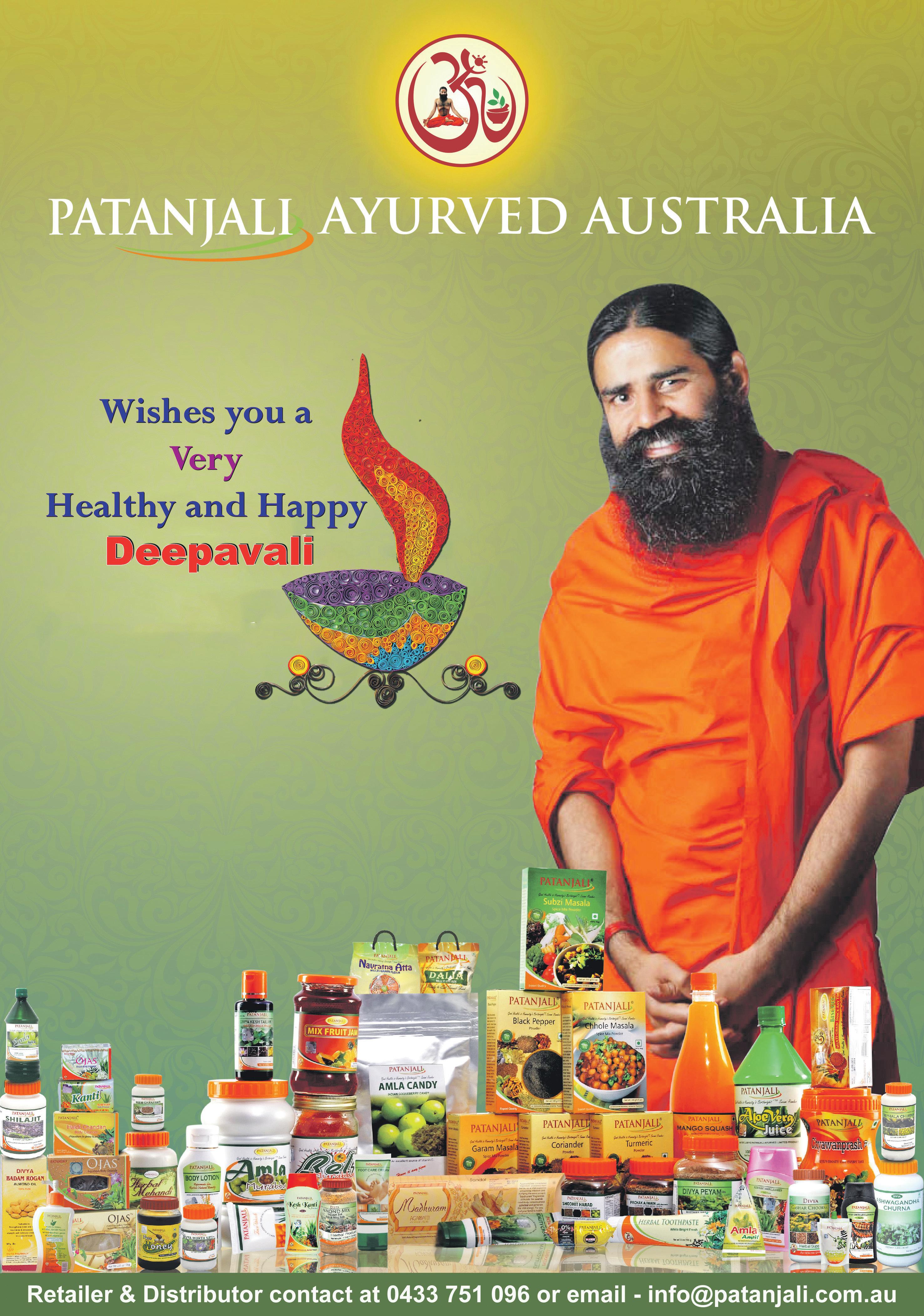
NOVEMBER 2013 43 INDIAN LINK





44 NOVEMBER 2013 www.indianlink.com.au • Reliable Service and Privacy Guaranteed • Over 25 lenders to choose from • Commercial finance Health check for existing Home Loan “I used to think that all mortgage brokers are the same.... until I met Swati” – Komal Over 18 years of experience in finance industry. Talk to a qualified professional. Dandenong and Springvale Call Swati Palsule on 0411 78 28 18 Authorised Credit Representative 400349 of BLSAA Pty. Ltd. (Australian Credit Licence No.391237) Talk to a specialist for all your Home Loan needs Th ERE IS NO SU b STITUTE FOR E x PERIENCE swati@buyerschoice.com.au He captured the magic of Aishwarya Rai when she got back home after winning the Miss World crown in 1994. Now AP guRusWAmy captures beautiful moments in Melbourne’s Indian community! In his 40-year career experience as a professional photographer in India Guruswamy covered news, corporate events, large scale events and celebrities. For stunning images of your next big event, call guruswamy on 0406 820 413.
Healthy Diwali
It’s time to put away those sweets and swap them for fruit, fragrances and fun candles
By G EETA K HURANA

Another year has gone by and festival season is back again! India can never be complete without its special foods and good hospitality, and Diwali, the festival of lights, is the most awaited festival of India. And at this time, anyone even talking about dieting or healthy eating is deemed to be very unpopular.
It has been seen over the years that, right after the festival season, the rate of obesity and diabetes goes up. Therefore, experts warn that this festival fun, and not least, the culture of sweet-eating that peaks at the time, can trigger long-term health problems, with diabetes only at the start. But with festivities all around it is very difficult to stay focused and adhere to a strict diet. It might start with a bite here and a bite there, but before we know we have suddenly eaten an extra plate full of extra calories. Counting calories at festivals is a big challenge.
Diwali is not complete without exchanging gifts for friends and family. The tradition of gifting mithai is a very old tradition. But many a time these days with people being a little calorie conscious, they do not tend to consume these and either the sweets are wasted or are passed from one family to the next. So this Diwali, why not be a little untraditional and gift everyone the gift of health. Look a little more closely at gifts, and try to combine taste with health. Here are a few ideas.
Fruit basket
A fruit basket is the healthiest gift you can give anyone. Fill it up with different exotic fruits and give family and friends the perfect gift of health. According to dietary guidelines, we should have at least two serves of fruit and five serves of vegetables every day, but most of us do not even have one piece of fruit a day. Fruits such as oranges, limes, mangoes, strawberries, rockmelon, and pineapple are excellent sources of vitamin C that help to heal cuts and wounds, build up our immune system and keep our
gums and teeth healthy. Bananas, prunes, dried peaches, apricots, honeydew, melons and oranges are good sources of potassium. Fruits are also a good source of fibre. Some fruits, such as avocadoes and olives are excellent sources of unsaturated fats.
Nuts and dried fruit
Nuts and dried fruit are always a great healthy gift idea. Prepare a basket, or a beautifully decorated thali with a bountiful array of different nuts such as walnuts, almonds, macadamias, Brazil nuts, or others, and exotic dried fruit, such as dates, dried apricots, peaches, pitted prunes or dried apples. Nuts are an excellent source of protein and unsaturated fats and dried fruits are an excellent source of fibre, as well as an ideal replacement to desserts and sweets.
Healthy desserts
If you are home and have time to prepare some desserts, these would be the ideal and most thoughtful gift. Try and use low fat ingredients like low fat milk and other dairy
products. Use natural sweeteners like honey and dates to make sweets, and avoid using refined sugar or artificial sweeteners. You can also improve the nutritional value by using wholemeal flour and adding some fruit, such as berries and bananas, nuts and dried fruit.
Herbs and seasonings
With everyone bringing in sweets, wouldn’t it be good to spice up your gift baskets with some fresh herbs, spices, condiments and healthy salad dressings. An exotic basket with bottles of herbs, spices, and a bottle of olive oil, some seasonings and a bottle of balsamic vinegar or Dijon mustard is sure to be a welcome gift. This gift is not only for Diwali, as it is not perishable, and your friends can enjoy its contents for months (except for the fresh herbs that is).
Basket full of tea
We Indians love a cup of chai. And giving someone the gift of tea means giving them the opportunity to stop, relax and enjoy the moment, time and time again. Prepare a basket full of different
types of tea such as herbal, Tulsi, green tea, organic tea, or flavoured tea, and present it to them.
Gift of light
Do not limit yourself to just sweet hampers; try to broaden your horizon and focus on other gifts too. Diwali being the festival of lights, pick up a variety of light symbols such as diyas and candles, such as wax diyas, brass diyas, Lakshmi and Ganesh diyas. Attractive lanterns and lamps can also be gifted.
Home fragrances
Home fragrances, such as Diwali incense sticks, floating candles, fragrant sachets available in a large range of fragrances such as lemongrass, rose, orange and sandal might last for a long time.
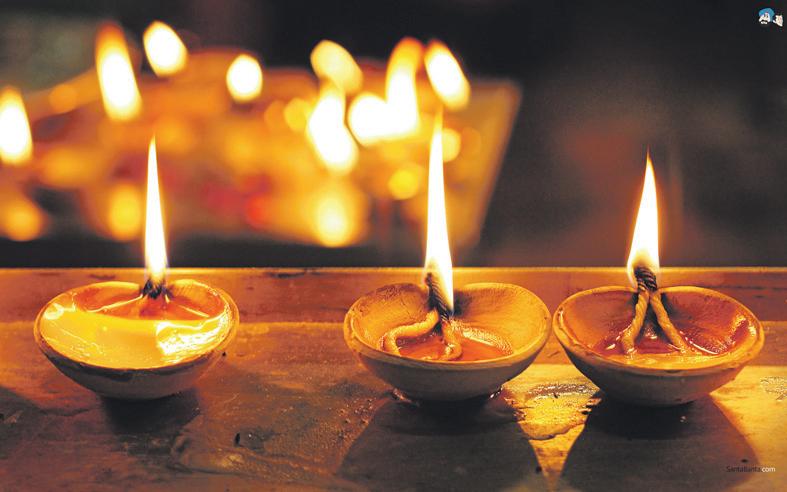
The size of the gift should not matter, as even the smallest of gifts can be made to look elegant, but it is the thought that counts. So this Diwali let’s give our friends and family thoughtful gifts, instead of giving for the sake of giving!
With every one bringing in sweets, wouldn’t it be good to spice up your gift baskets with some fresh herbs, spices, condiments and healthy salad dressings
NOVEMBER 2013 45 INDIAN LINK
W e L LB eing


46 NOVEMBER 2013 www.indianlink.com.au
Kah Smash Repairs
(EST. 1988)
SPECIALISING IN MINOR ACCIDENT REPAIRS





NOVEMBER 2013 47
* PAINTLESS DENTS REPAIRS * BUMPER BAR & PANEL REPAIRS * FREE QUOTE * FREE LOAN CAR AVAILABLE * 5 YEAR WRITTEN GUARANTEE 90 GARD ROAD MOUNT COTTRELL VIC 3024 TEL 03 9748 1288 MOB 0432 121 888
A date with
SRK!
Der aaye durust aaye! Despite a near two-hour delay, King Khan rules like only he can
It was a late start. Very late. So incredibly late that this article was very nearly called The (late) Shahrukh Khan
But just as you expect the most beautiful brides to be late to the altar, so too do you expect the biggest and brightest of Bollywood stars to be late for their performances. Heck, you’d be surprised if they were on time!
And yet this time round, the Sydney audience could not contain themselves as the hugely publicised Temptation Reloaded show opened after a delay of an hour and forty-five minutes. They broke out in ‘boos’ as the lights finally dimmed, and as the introduction came on, the usually suave Harry Harinath, Parramasala director, fumbled as the waiting gallery showed their displeasure.
But such is the power of Bollywood that ultimately, the masses forgive its stars their every folly. This time round, the star was the indomitable Shahrukh Khan, and no one can be mad at him for too long.
It was him they had come to see.
There was much build up on the screen as the audience sat on
the edge of their seats in those final moments, waiting for their favourite star. The music was deafening and climactic as SRK clips flashed by with dramatic speed, hypnotising the audience into hysteria. It was almost as if what you were going to see would be the best thing you would see for a long, long time, or that you were going to lay eyes on some kind of messiah…
And when the messiah set foot on stage, escorted behind open umbrellas before a dramatic ‘unveiling,’ he looked, er, kind of puny. No, I am not going to hit ‘backspace’ and erase that last bit. And if you’re a diehard SRK fan, you can start writing out your letter of protest; but please be aware that I have myself been an admirer ever since I first saw SRK on the TV series Fauji and more so since he gave the most amazing interview to this newspaper when he was in Sydney last during the making of Chak de India. But, he did look rather scrawny, and was a bit of an anti-climax after that massive build-up. And dressed all in black, with the blackest of black hair even at age 48, and in what looked like a black raincoat, the messiah looked less like a messiah and more like a baddie from Lord of the Rings. Yet oh, how the audience loved him; they roared as he greeted them in different tongues, and in one very bad Aussie accent.
SRK’s first act, 45 minutes
into the show, lasted just over ten minutes, but included the best and most expected of SRK, in a medley of Chaiya Chaiya, Kuch Kuch Hota Hai, Kali Kali Aankhen, Chammak Chhalo, and that trademark line Picture abhi baaki hai. The Badshah of Bollywood also felt hot and cold alternatively, because he changed jackets four times in those ten minutes, each change respectfully carried onto stage by one of his minions.
At least some of his fans in the audience had by now forgiven him his late start, especially as he related how much he loved Sydney and would like to settle down here, probably in ‘Harish’ Park. He also thanked the acts that came before him, some of Bollywood’s leading women, who were huge drawcards to his show. Perhaps no one has the guts to tell the King that you can’t refer to each woman as ‘the one and only’; he might ask for their head on a platter. Or then again, ask the women: he probably makes them feel they are his ‘one and only’ as he romances them in his oh-so-special way…
Sydney’s very own Poonam Chandiramani definitely felt she was his ‘one-and-only,’ as he singled her out from the audience for some special King Khan attention. One-time Miss India and the country’s leading model in the mid to late ‘80s, Poonam (nee Gidwani) must have stood out like a flash in the pan from where SRK stood. She came across with dignity in the face
of the star’s gentle needling, and looked stunning on screen as he wooed her with his love songs. (In a parallel world somewhere, Shahrukh probably would have wooed her on screen: few people know that in her heyday, Bollywood came knocking at Poonam’s door, and while she declined the offers, her bestie from the industry, another Miss India called Juhi Chawla, chose to take them on).

“I felt like I had known him for years as I stood beside him on stage chatting,” Poonam told Indian Link later.


Three other members of the audience, the irrepressible Lucky Singh, her hubby Balbir, and Abhishek Chopra will probably tell stories of their time up close and personal with Shahrukh, for as long as they live. Jab tak hai jaan? Meanwhile, there must be a YouTube clip somewhere of Lucky’s relentless refusal to give up the mic, of Balbir rolling on the floor, or of Abhishek’s unfortunate lungi wardrobe malfunction. Now that would be priceless!
For many, SRK’s hobnobbing with randomly picked members of the audience will remain the standout memory from the event. King Khan was in his element as he did what he does best in his stage shows, taking the mickey out of his beloved fans.

The dancing divas Madhuri Dixit, Rani Mukherjee and Jacqueline Fernandez were
reduced sadly to ‘side-acts’. Many wanted to see them and hear from them, especially the divine Madhuri, as much as they wanted to see Shahrukh, and they were left disappointed. Madhuri Dixit’s advent on stage particularly saw the entire auditorium light up like a night sky as phone cameras went off. The hit O Re Piya was performed to non-stop screaming, even as the iconic star was slowly raised on a white cloud in near darkness. As the stage lit up to Devdas-style decorations, it was the foot-stomping Ek Do Teen and Aaja Nachle, so enticingly performed that one felt like telling the chorus to step aside and let the lady speak on her own!
With Rani as well the crowd roared to see the lovable star say Shava Shava. The chorus line in red allowed her to stand out in shimmering white, a strategically placed head-piece giving her added height. She may not be our best dancing star, better known as she is for her histrionics, but she put enough vigour and gamine energy into her performance to make it pure entertainment, and brought her best-known numbers to life admirably. And the best part of it was, she looked like she enjoyed every minute of it!
The leggy Jacqueline Fernandez, completely overshadowed, was reduced to being but a filler act.
Cleverly picked clips from their films (and dialogues in Rani’s case like “Ab kuch dramatics ki zaroorat hai”) whet the appetite
B o LLy Woo D
y RAJNI ANAND LUTHRA
just before the stars came on. In hindsight, they probably showed the gloriously transforming power of the silver screen that converts regular people into the enigma that they are.
In contrast, self-proclaimed rapper Honey Singh Yo Yo (or is it the other way round?) got way more exposure. Some of his songs such as Lungi Dance down well, but hey, did we have to sit through two renditions? And did we really have to listen to him blast on about himself: he had successfully wrapped up the controversial court case against him; the newspapers write good stories about him now; he would bring home a Grammy one day; he is going to record in every Indian language; his next song is so good he deserves an award for it… And it was Shahrukh who referred to himself as a “self-obsessed superstar” only a few minutes ago.
MC Meiyang Chang on the other hand, managed to reach out more successfully. His clean image, his sheer love for what he does, and his unmistakable talents as a singer and entertainer came across commendably. For someone of non-Indian heritage to mouth words like Saadi to aisi hai ada sing older classics as well as new hits and to do a parody of maestro Jagjit Singh… what can we say but Bravo!
There is no doubt that the show will go down as one of the highlights of the year. But there was much discussion in the

of a full house. One remembers the AR Rahman concert at the same venue a few years ago which pulled in well over 15,000 people.
For many, SRK’s hobnobbing with randomly picked members of the audience will remain the stand-out memory from the event. King Khan was in his element as he did what he does best in his stage shows, taking the mickey out of his beloved fans

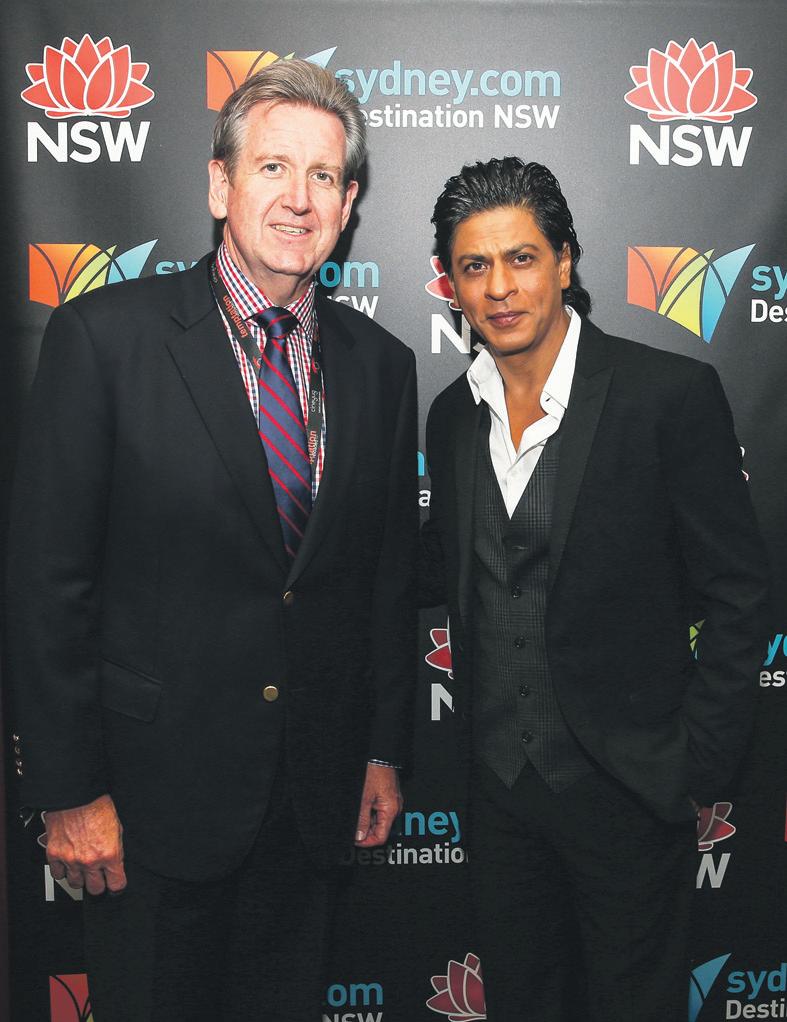



49
Poonam Chandiramani is serenaded on stage by the ‘King of Romance’ (above); and SRK with NSW Premier Barry O’Farrell
Flexible learning at TBM
Providing a sound learning experience for students with a broad range of courses and qualifications
TBM Training Pty Ltd
(TBM) was established in the Latrobe Valley in 2001 and has been located in Cranbourne for eight years. TBM continues to offer career relevant qualifications and courses to meet community needs and industry skills shortages. The flexible delivery approach model of TBM allows students to choose classroom, workplace, and distance learning.


In addition to their long established Cranbourne facility, TBM has a new, roomy, well equipped training facility in Morwell to better deliver a sound learning experience to the community of the Latrobe Valley and greater Gippsland.
52 qualifications and courses are on offer to ensure students are presented with a real choice of career options. Low tuition contributions, day, evening and Saturday classes, and qualifications and courses from entry level to Advanced Diplomas in several industry sectors all contribute to the TBM point of difference.
This nationally recognised private training organisation delivers ‘a sound learning experience’ for all students. It is a tradition within TBM that all students are treated as equals and with respect. With this belief, students gain competence not only in the enrolled qualification or course, but also in their chosen career field.
Student ‘access and equity’ is not only a TBM policy, but is practiced by all at TBM. It is important all students are provided the best opportunity to reach their potential in their chosen qualification or course.
It is important to Barry (the founder) to maintain a consistent awareness of student needs, and community trends in training and assessment.
A great team is another key ingredient in the delivery of a sound learning experience. With this in mind, a committed team of managers, trainers and support staff all combine to ensure that students are offered the best possible customer service.
So how is TMB different to other learning institutions? TBM offers growth opportunities not only to students looking to gain employment or advance their career prospects, but just as importantly offers employees the same chances through personal development and promotion from within.
We employee industry skilled and experienced trainers with a heart for working with students to reach their career potential and foster a team spirit within, and by doing so, ensures students of having a sound learning experience. They research community learning needs and work with industry groups and
local authorities in order to provide flexible, practical, career focused training in skill shortage industry sectors.
TBM methods of course delivery include classroom, workplace, and distance learning with student support to encourage all students to complete their chosen qualification. TBM has access to government funding for eligible students in approved qualifications and courses. They provide ongoing trainer availability and contact even after completion of classroom sessions. TBM always strives to always deliver a sound learning experience. They deliver
vocationally based training which equips graduates to realise their career potential.
The TBM difference comes from a privately operated company managed by the founder, and although considerable growth has occurred as a result of word of mouth referrals, this registered training organisation remains small enough for dedicated, skilled staff to be aware of the needs of students.
Drop into the TBM Training facility at First Floor, 7–9 Bakewell Street Cranbourne, VIC, 3977 or 19A Hazelwood Road, Morwell, VIC, 3840 and say “hi” to their friendly staff.
Tailored insurance
iLink provides clients with expert and innovative advice to meet their needs
Did you know that insurance brokers are very different to insurance agents?
As a broker, they act on behalf of clients to obtain the most appropriate and best value insurance.
Obligation free business insurance health check
Will your insurance policy fully protect you against a major loss? And do you understand the exclusions of your policy?
Whether you need a new insurance cover, your current insurance policy is due for renewal, or you simply wish to review your insurance coverage in place, check out iLink.
They will review your current insurance policy and explain the scope of coverage and limits of your policy.
At no cost to you they will recommend any improvement or alteration to your policy coverage and provide an alternative
quotation to offer a tailored insurance solution to meet your precise requirements.
They will provide professional service and advice, tailored insurance, and a proactive and friendly claims service. In addition to this, they have access to a wide range of insurer markets and products.
iLink Insurance Brokers are young and proactive general insurance brokers.
They offer a wide range of general insurance products and risk management solutions to their clients because they know the general insurance marketplace and trends.
At iLink Insurance Brokers clients are the number one priority. They are dedicated to providing an ‘end to end’ insurance service by identifying and analysing the risk exposure of their clients and/or their business to tailor insurance solutions accordingly.
They work for clients as their legally appointed agent to represent their interests first and foremost.
Protecting client’s interests is their prime concern and they take personal care to structure client’s insurance programs to align with their insurance needs and budgets.
iLink have access to over 100 of Australia’s leading insurers and underwriting agencies. As a professional broker, they represent the client, not the insurance company, to ensure that clients get the best available products and services.

They do not claim to be big, but aim to exceed clients’ expectations by offering tailored products with broad policy coverage at competitive prices and excellent professional services including claims services. They strongly believe that their role is not merely to sell insurance, but to provide holistic services and advice to clients to assist in managing risk exposures and ensuring peace of mind.
iLink provides advice and assistance to make sure the clients are properly protected against the unexpected losses.
Their mission and objectives are:
• To understand clients’ insurance needs and structure exceptional programmes that produce the best possible results.
• Save client’s time and money by managing their insurance needs.
• Eliminate the need for clients to conduct price and product comparisons.
• Provide clients with the confidence and certainty to pursue their objectives.
• Act as a client’s business partner and professional advisor on insurance and risk management matters.
• Minimise risk of over or underinsurance by correctly assessing client’s assets and identifying gaps in cover.
• Improve cash flow by providing access to premium funding (monthly payment facility).
• Provide information on emerging risks and insurance market trends.
• Keep clients informed of impacts of market changes on insurance cover.
50 NOVEMBER 2013 www.indianlink.com.au
ADV e R to R i AL
Contact Shalin Shah for more details on 03 8685 8834 or go to www.ilinkinsurance.com.au

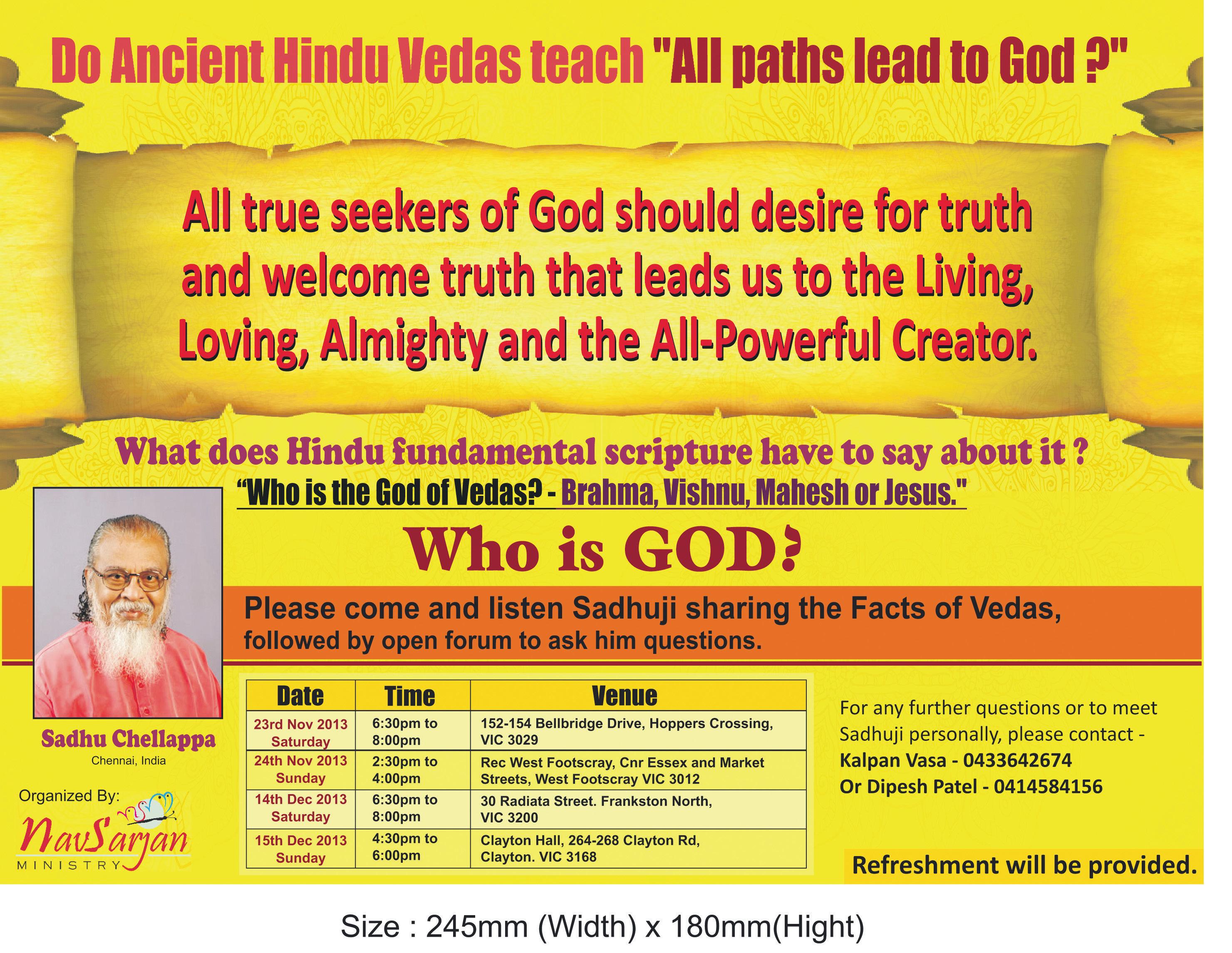
NOVEMBER 2013 51 INDIAN LINK
It’s time to move on
Senior sportsmen present a myopic view on cricketer Fawad Ahmed’s religious beliefs, despite unstinted support for him from Cricket Australia
suggest that by refusing to wear the VB logo, Ahmed was in breach of his contract. It begs belief that a former coach of the predominantly Muslim Pakistani cricket team could trivialise the issue so readily.
By RITAM MITRA
It’s a mark of modern times that foreign-born athletes can represent their adopted countries with pride on the sporting field. Indeed, in the 2011 census, it was revealed that over a quarter of the population was born overseas. It’s no surprise that foreign-born athletes have become ubiquitous in all Australian sports, think tennis player Jelena Dokic (Yugoslavia), former Wallaby Clyde Rathbone (South Africa), and boxer Kostya Tszyu (Russia). Australia also recently welcomed its first ever Muslim test cricketer in Usman Khawaja.
But recent comments regarding Fawad Ahmed, who was in 2012 granted asylum as a refugee from Pakistan, serve to remind us that Australian cricket, at all its senior representative levels, has rarely been representative of the varying demographics of its adoring population.
Fawad Ahmed played ten first class matches in Pakistan before fleeing to Australia in 2010 as an asylum seeker. In Pakistan, Ahmed had been involved with a non-government organisation that sought to provide education to women, and this allegedly led to threats being made against

him by extremists. After fleeing to Australia, he began playing cricket with Melbourne University and working in a warehouse, but his claim for asylum was initially rejected. It must be noted, however, that heavy support shown by Cricket Australia (CA) led to ministerial intervention through which Ahmed eventually become a permanent resident in late 2012. Ahmed later had his citizenship fast-tracked through the enactment of Commonwealth legislation, lobbied for again, by CA.

CA’s expanded role in promoting an inclusive and more representative culture at the elite level was made even clearer when they first approached Ahmed to ask whether he would be comfortable wearing clothing with the Victoria Bitter logo, given he was a practising Muslim and did not drink alcohol. After Ahmed suggested that he would be uncomfortable wearing the logos, CA produced special uniforms for Ahmed.
And that would have been the end of the matter, but, as happens with those who find themselves in the public spotlight, someone will always have another word to say.
First came the inevitable racist comments on Twitter, which CA Chief Executive James Sutherland appropriately condemned. Indeed, Sutherland expressed that “CA is fully supportive of Fawad’s personal beliefs and he is a valued and popular member of the Australian cricket team and the
wider cricket community”. But it was not good enough for some.
Last month, former Australian batsman, Doug Walters, took offence to Ahmed’s choice saying, “I think if he doesn’t want to wear the team gear, he should not be part of the team. Maybe if he doesn’t want to be paid that’s okay”. This formed part of a revealing Daily Telegraph piece that only highlighted the myopic view of some of the country’s other ageing statesmen.
Geoff Lawson, the former fast bowler and Pakistan team coach, thought there were contractual issues that arose, announcing that, “If you don’t agree with the terms you have a choice as to whether you work somewhere else. Players should be able to object on a number of moral grounds… as long as they don’t accept the payments the sponsor provides”.
To begin with, Walters and Lawson both missed the memo from Victoria Bitter themselves. A Carlton & United Breweries (CUB) spokeswoman said, “We support the approach taken in the case of Fawad’s shirt,” and there is no doubting the fact that Ahmed’s declination to wear the sponsor’s logo would have been an absolute blessing for CUB. Ahmed, a quiet, humble, respectful, and as of yet a relatively unknown cricketer, would certainly not have been a marketer’s dream, but VB instead enjoyed a tremendous boost in publicity, ironically as a result of the logo Ahmed wasn’t wearing. Secondly, Lawson’s comments
Ahmed reached an agreement with CA not to wear the logo, and it is almost certain that this agreement was honoured in writing within his contract, which lends Lawson’s argument no weight whatsoever. In any case, it does not matter that the agreement may not have been explicitly set out in Ahmed’s initial player’s contract, as the subsequent negotiation and consensus between all parties, including CUB CA and Ahmed, would still have legal effect, whether oral or written. Even great cricketers such as Lawson and Walters would not seek to challenge centuries of common law contract principles.
The best (or worst, depending on how amusing you find his bigotry) comments were made by the former rugby international, David Campese. If you’re struggling to make the connection between Fawad Ahmed, CA and David Campese, don’t worry, others did too. On his Twitter account, Campese applauds Walters, writing, “Well said Doug, tell him to go home”. When reminded that the South African batsman Hashim Amla also refuses to wear a South African sponsor’s logos for the same reasons, Campese’s retort was certainly worth a read, if for pure entertainment value, “It is SA. Who knows what the deal is? And I don’t care. At least Doug Walter (sic) cares. Which is a start. Great player”. Sutherland denounced Campese’s tweets unequivocally, although the tweets themselves probably discredited the man adequately.
Australia got its cricket from England, but as much as we berate the ‘Whinging Poms,’ they’re a generation ahead of us in their attitude towards and acceptance and inclusion of players with foreign backgrounds. Players such as Ravi Bopara, Owais Shah, Monty Panesar, Sajid Mahmood and Adil Rashid are standouts with sub-continental roots. Then there are players with South African backgrounds, including Andrew Strauss, Kevin Pietersen, Jonathan Trott and Matt Prior.
Sutherland expressed that “CA is fully supportive of Fawad’s personal beliefs and he is a valued and popular member of the Australian cricket team and the wider cricket community”
There may be a quiet murmur here or there regarding the presence of so many players of South African origin on the team sheet, but if anyone knows how to take pride in their national team, it’s the English.
It is refreshing and exciting to see CA initiatives aimed at increasing cross-cultural awareness and take-up of the game from a grassroots level.
CA recently announced that two community rookie contracts would be offered by each BBL team in an effort to “provide opportunities to players who might not otherwise be identified as one of Australian cricket’s pathway programs; players from rural communities, indigenous backgrounds, low socio-economic areas and those from non-English speaking backgrounds”. The CA drive makes sense, many junior representative sides will feature young talents from a variety of backgrounds, but at the higher levels the numbers dwindle. Now, with the likes of Ashton Agar, Gurinder Sandhu and Fawad Ahmed at the highest level, it’s time to cast off the shackles of times gone by.
Because at the end of the day, the best 11 players should represent Australia on the cricket field. It should be enough that a player chooses to represent Australia. After all, since when did wearing a sponsor’s logo make you an Australian? It’s time to move on from the past.
52 NOVEMBER 2013 www.indianlink.com.au
s P o R t
The end of an era s P
Sachin Tendulkar’s retirement brings to a close the golden age of cricket, reports AMAN DHINGRA

Hearing of Tendulkar’s retirement reminded me of how we take things for granted. As a 19 year old, I have never known cricket without Sachin, and although I knew that one day his career would end, it always felt as if that day might never come. It seems so sudden that the ‘little master’, whose name has become synonymous with cricket, has only a few playing days left in his career. And each of those days will be a celebration of the man who has become an icon not just for cricket fans around the world, but for all sportsmen everywhere.
When he steps off the field for the last time, the debate about his place in history will take off again. Was he more or less valuable than Dravid? Are his records exaggerated because the BCCI couldn’t drop him? Such questions
are irrelevant because Sachin was never about numbers or figures. Tendulkar was about the game, and about the way it should be played. The years, runs and centuries all become a blur when we look back on the near quarter of a century that his international career has spanned; but what overshadows all of this was the grace, composure and humility he has maintained, both on and off the field, while being the single focus for over a billion people. He has been a genuine inspiration and example for everyone to look up to.

“If I get hurt, I will learn quicker,’’ he said. Soon after, in his first Test series, against Pakistan, Sachin was hit in the face by Waqar Younis and suffered a deep cut to his nose. He hit the next ball for 4!
Thanks for the memories, Sachin! I’ll never forget the Boxing
Day Test of 2011 on day 3 when, on the first ball after tea you hit an upper cut for 6. I’ll never forget the moment when the Indian team hoisted you on their shoulders and paraded you around the ground
after finally winning the World Cup for you.
Virat Kohli then summed it up perfectly, “Sachin Tendulkar has carried the burden of the nation for 21 years. It was
time we carried him.”
In the years to come, we will be the lucky ones who can say that we saw these men play, in the same way that our grandparents’ generation speak of Bradman.
NOVEMBER 2013 53 INDIAN LINK
o R t
Pride and reconciliation
Life is too short to hold grudges, particularly within the family
friendship is lost. Occasionally, strong friendship ties that existed in the past help to resolve it. When such quarrels exist in adult relationships, it is indeed a sad state of affairs.
Not so long ago, I came across a family who were scattered all over the world with no contact between them. We hear of such break-ups and wonder how it could have started? Perhaps an unresolved argument about a trivial matter, a disagreement about a family decision, or just a simple misunderstanding. Who knows?
Was it an unresolved resentment simmering below the surface that was vented in an argument that led to the standoff?
If good friends and close family members do not have the humility to make amends and bring back the closeness they once shared, how will they ever be considerate to others?
 By SARoJA SRINIVASAN
By SARoJA SRINIVASAN

Have you ever wondered why or how best friends and family members stop talking to each other for years?
What is it that each find so difficult to extend the olive branch and make amends? They find it so hard to say ‘let bygones be bygones’
and start again. Is it pride? Is it an overvalued sense of their own selfrighteousness and self-importance that stops them from crossing the bridge to shake the other’s hand? Is it stubbornness or a lack of willingness to improve the situation? Many people confuse the courage that is required to make an effort to say sorry, as weakness. In fact, the opposite is true, as it takes a courageous person to have the modesty to take the first steps to clear the air.
Far too often people forget that life is too precious and too short to carry grudges. If good friends
Sadly, whatever the reason, pride and ego seem to come in the way of an amicable resolution. Repeatedly we find that a sense of empathy and understanding is sadly lacking when such resentments remain unresolved over several years. The longer it remains unresolved, the harder it becomes. It is very important to sort out differences quickly and aim to come to a resolution even if it means agreeing to disagree, so that the doors of communication remain open. An old saying comes to mind: ‘Never go to bed angry and upset after an argument,’ which really means resolve conflicts quickly, preferably on the same day.
The bonds of family and close friendships are surely worth preserving, whatever it takes and close family members do not have the humility to make amends and bring back the closeness they once shared, how will they ever be considerate to others? One may wonder how they would react if someone crossed their path, even accidentally. Their stubbornness to see another’s point of view could cost them heavily. During teenage years, it is common to come across rivalry between friends, with petty arguments leading to stand-offs. Sometimes many such situations never resolve and a precious chance to start a life-long close
If we stop for a moment and realise how many people do not have a family to call their own, either from birth, or due to a totally unforseen accident, the luxury and privilege of being part of a family unit or enjoying close friendships becomes very precious. One has to have maturity and humility to value it and preserve it at all costs. This effort has to
JAmAL
come from both parties. When each refuses to start the process of making-up, waiting for the other to make the move could mean the moment of reconciliation is lost forever. The bonds of family and close friendships are surely worth preserving, whatever it takes.
QutuB
your satisfaction is my priority
The first man to combine the power of spirituality no matter what your problems are. I can help you to solve them even in desperate cases like relationships, work problems. For those unlucky in love I can do special prayers. If your Husband or wife has walked out on you, I can help using the most powerful prayers to bring him or her back. I can help with alcohol problems, smoking addictions, tobacco abuse, uniting separated families and help to your family protect from bad people.
All work guaranteed without disappointment. A visit with Jamal Qutub may ease your worries.
Contact: 0470 306 957 or 0470 030 399

54 NOVEMBER 2013 www.indianlink.com.au
PsyC he

NOVEMBER 2013 55 INDIAN LINK
Percy gets spooky
Inexplicable happenings are common around Halloween, as well as any other time of the year, discovers Percy

books on sports and various other subjects. One evening, Percy regaled us with a strange story.
You may know little about my personal life, he said, so sit back and follow this tale.
I have some peculiar likes and dislikes. My lifestyle certainly is not just the usual. I collect items no one would dream of collecting. My dietary formulae puzzle most of my friends. My sleeping habits are at best, atrociously inhuman. And I consume an inordinate amount of hot tea, yes, plain hot tea! About 25 mugs of it, and my mug holds about three normal cups. Each morning as I go through my daily ritual of reading the newspapers, I devour three or four mugs of hot tea before standing and stretching my body, before checking the inbox on my computer.
The reason for this high intake of tea, as per my research, is that those who drink excessive amounts of tea will never have a fear of cancer. But I drink tea because, cancer or no cancer, I love it! You may give me a barrel of wine, or a carton of beer, but I would still prefer my cuppa tea!
Now some years ago, my wife Maya and I woke up to a freezing Melbourne Saturday, and we decided on the spur of the moment to drive to Mildura, an inland town of Victoria, 350 miles north-west of Melbourne. It was a long weekend and we thought it was worth the trip. While there is little of noteworthiness in Mildura, the weather was wonderful and we were keen to escape the temperamental Melbourne weather. Quickly we packed, never forgetting my huge picnic flask that holds about ten mugs of tea, and got on the road at around 8am.
The only mistake we made as we had already realised, was that we had made no hotel or motel reservation. This being the premobile phone era, we could not contact accommodation providers
from our car. After a few teadrinking stops on the way, we hit Mildura around midday. We enquired at this hotel/motel and that for accommodation, but the travel-loving Melbournians had evidently beaten us to the punch. In desperation I returned to the car, enjoyed a mug of tea and gave our predicament some thought. Having failed to find accommodation anywhere, we drove to nearby Robinvale in the hope of better luck.
Needless to say, there was no accommodation in Robinvale either. So we decided to try smaller towns on the way, and drove along the River Murray that runs its jagged course from the Snowy Mountains in the northeast, towards South Australia in the west. While the route was certainly scenic, we were in no mood to enjoy the scenery without the promise of accommodation at which we could rest our weary bodies, and night was fast approaching. Even in the tourist town of Swan Hill, we found no accommodation. My positive frame of mind coaxed me to drive to Koondurook, but again, no luck! The tragedy was that the level of tea in my flask was scraping the bottom, and I needed my cuppa every half hour to stay awake.
Defeated, we now decided to drive back home via Echuca, a larger town than Mildura. But the flask was now bone-dry, which worried me. Without my ‘fix’ like a junkie, I was not sure if I could drive beyond Echuca. We were out of luck there too. Being the
long weekend, eateries like KFC and McDonalds had also closed early, and I could not replenish my supply of tea.

Disappointed, the lack of tea nearly disabling me, I pulled up as we reached a thick wooded area just outside of Echuca, and told Maya that without tea, I could drive no further. Maya was weary too, for we had driven over 600 miles and were still some 130 miles away from home. Exploring the options available to us, I stepped out of the car and had a smoke. Carefully stepping on the spent butt, I returned to the driver’s seat and gathered courage to drive the final stretch back home; the night now truly upon us.
Suddenly in this uninhabited, thickly wooded part of the bush in the middle of nowhere, I heard a knock on my car window just as I was about to drive off.
Now I must tell you even if you may already know it, that when in the bush, the knock of that kind is not a sign about which to be jubilant. Under the circumstance we were in, I could imagine a gun smashing the side window, the driver promptly shot dead, the female passenger abducted and the car robbed. In a flash, an entire range of other dreadful eventualities swept through my mind. Having no other options at my disposal, I lowered the glass and saw two hefty guys standing by the car.
“Would you like to come in our little chapel and join us for a cup of tea, perhaps?” asked one of the giants, rather politely.
Churchgoers ourselves, we let the two giants escort us into their truly little chapel, a few meters from the road. If I remember correctly, there was just one dim light outside the chapel. It seemed that their vestry meeting had just ended, and we noticed a dozen or so clergy and members standing just outside. They pleasantly asked us to join them for the cuppa. Very thoughtfully, they let me fill my elephantine flask with tea. They even packed sandwiches for our journey back home.
After a week, Maya and I decided to drive to that little chapel and leave a donation for those who came to our rescue that night, when we had found ourselves despondent and stranded without my cuppa. We reached the exact spot where we had parked that night the week before, but were monumentally astounded to see that there was no chapel where we had met with such polite hospitality. It was a heavily treed area for many square miles, with no building in sight anywhere!
I can promise on a stack of tea flasks that, that particular night, there was a chapel building and also a chapel hall, where we were welcomed and served tea and sandwiches. Nonplussed, and wondering if we had made a mistake and were at the wrong spot, I stood by my car and lit a cigarette. Lo and behold, I looked down and at my feet just a few paces from where I stood, lay the butt of the cigarette I smoked that night a week earlier!
And I consume an inordinate amount of hot tea, yes, plain hot tea! About 25 mugs of it, and my mug holds about three normal cups
It seemed that their vestry meeting had just ended, and we noticed a dozen or so clergy and members standing just outside
56 NOVEMBER 2013 www.indianlink.com.au
fi C tion

NOVEMBER 2013 57 INDIAN LINK

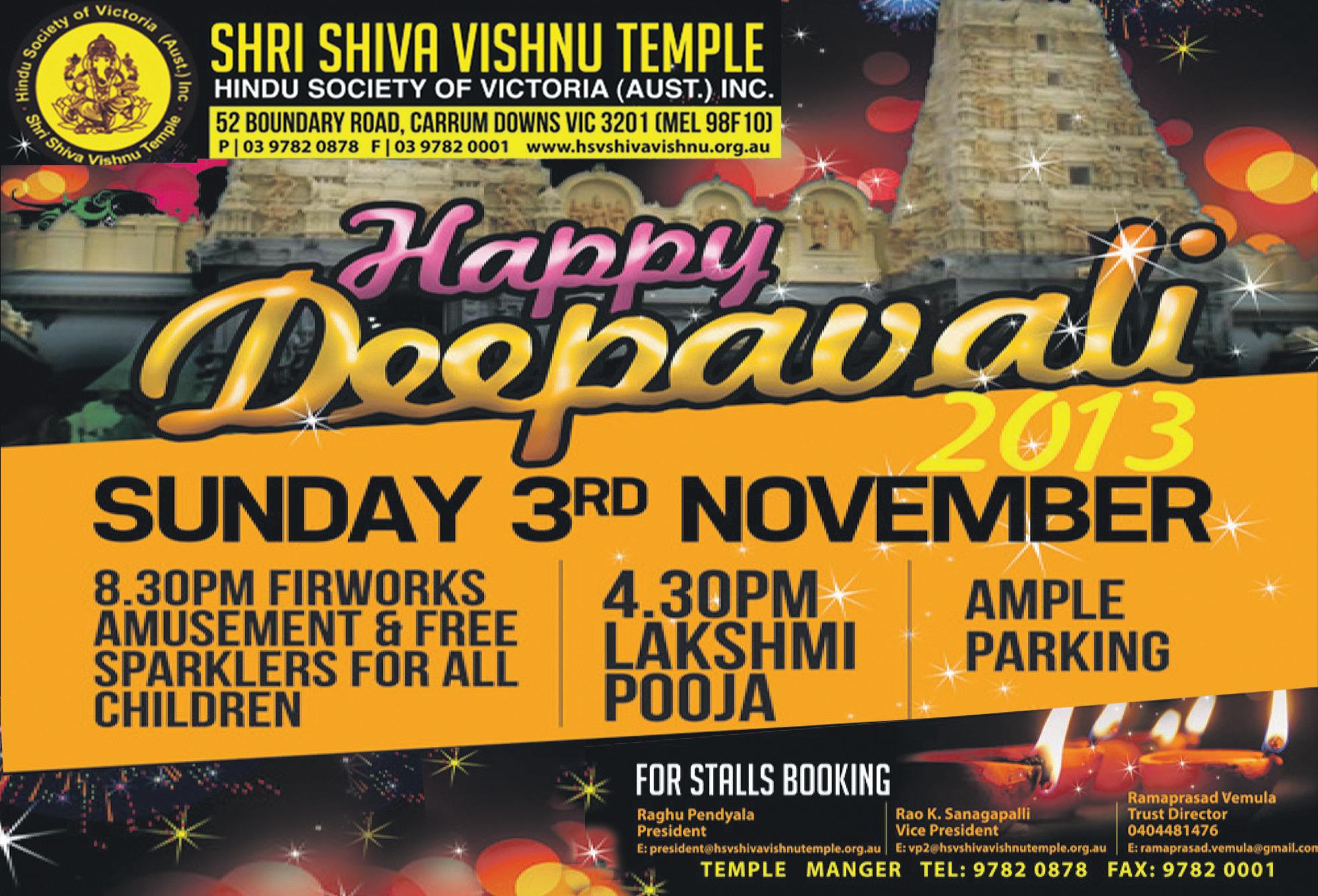
58 NOVEMBER 2013 www.indianlink.com.au
Hide your age
A few simple tips can conceal the signs of ageing and make you look younger and more attractive

s we age, patchy skin, crow’s feet, wrinkles and dull skin are dead giveaways to our age. But if you already have a good skin care routine, a few make up tricks can make you look years younger and leave people guessing your true age.
To retain younger looking skin for a long time, it is important to have a skin care routine from your twenties. A cleansing, toning, moisturising routine gradually incorporating a weekly facemask and exfoliating treatment, works for most people. The important thing is to choose products according to your skin type.
Once a woman hits her 40s and 50s, or is closer to or past menopause, the skin can get drier. Age spots and patchy skin are also some of the signs of ageing skin. Here is where modern day makeup comes in that hides flaws, highlights your best features and makes you look younger.
Lay it on thin
An important point to remember is not to cake on the foundation or concealer in thick layers, as that will only highlight your wrinkles and fine lines. Use a cream based foundation to cover any blotches or dark patches on your skin. Use a stick or a liquid foundation that can spread over the skin easily with your fingertips, without having to pull at the skin. If you don’t want it to look caked and thick, apply moisturiser before applying foundation, it will blend better.
Also, don’t forget the neck area, as that is usually the most obvious sign of one’s age. Blend the foundation all over your neck and jawbone. First apply foundation in dots all around the area, then blend in an upward direction with the fingers.
Eye openers
With age, our eyelids begin to droop, not to mention crow’s feet for those of us who squint in the sun or smoke. What often happens
is that one applies kohl or eyeliner to the lower lid and because the skin is not so firm anymore, it tends to smudge. Instead, apply liner and mascara on the top eyelid only. This solves two problems with one stroke, no smudging and the mascara opens up your eyes. If you absolutely must use liner on the lower lid, go for gel liners which are easy to apply and take off.
For fine lines and wrinkles around the eye region, concealer should work, but be sure it is in a shade that compliments your skin, or the attempt to hide dark circles will only make you look more tired.
An effective way to hide wrinkles in the upper eyelid is to wear eyeshadow. I know of a cosmetologist in her 50s who is never seen without it. Her own products keep her skin looking young, but the giveaway signs around the eyes are camouflaged to a large extent with eyeshadow. Go for shades of burnt orange or copper as they work best with Indian skin tones.
If you wear mascara daily and find taking it off every night is a chore, you can always consider professional eyelash tinting.
While dealing with the eyelashes, don’t forget your eyebrows. Make sure you have them in shape at all times, with the extra growth threaded off. Also, if, like me, you have a very thin growth at
the start of your eyebrows, use a brow pencil to fill in the gaps and give the brows a shape. Only don’t make them too thick or dark as that looks artificial.
Luscious lips
Our mouth and the area around the lips can also reveal our age. I have noticed especially in Australia that women who smoke have several vertical lines above their upper lip. To avoid these, besides obviously not smoking, one should consciously relax facial muscles regularly. As for the fine lines, the concealer should do the trick.
However, it is important to choose lipsticks carefully. I always go for the ones with extra moisture or those that have a very creamy texture. They are easy to apply and the moisture keeps the lips from looking dry.
Shades from the colour palette of brown, rose, nudes or berry work well. Go for the brighter shades as they can make your lips look larger and the full effect gives you a younger look. A coat of gloss also adds to the full appearance.
Cheek chic
The most problematic area can be the region of the cheeks as this is the largest portion of the face that is visible, so any blemishes there are immediately noticed. While the concealer and foundation may
have taken care of the patchy skin and fine lines, you need to give them a touch of blush to look good and to complete your look. I prefer the powder blushes as one can apply a really thin coat and not look made up. The creamy ones can cake up as you already have the foundation layer below, which is cream based.
A layer of separation must be created between the foundation and the blush, with a coat of translucent powder. Then apply the blush, preferably in pale shades of peach, rose or nude onto the apples of your cheeks towards your hairline. This will make your face look younger. Blend it well so that the blush doesn’t look like two red blotches on your cheeks.

Body tips
This is something everyone knows but no one follows: go easy on the caffeine and drink 7-8 glasses of water a day. The water flushes out the toxins from the skin and helps to keep it firm and moisturised.
Also, avoid using very hot water while showering; it is better to shower in the morning than at night, as the daytime humidity hydrates the skin and the moisturiser you apply keeps it trapped in.
Other than that, meditative practices, exercises and yoga are all great contributors to younger looking skin.
If you wear mascara daily and find taking it off every night is a chore, you can always consider professional eyelash tinting
NOVEMBER 2013 59 INDIAN LINK
B e Auty
To retain younger looking skin for a long time, it is important to have a skin care routine from your twenties
MINNAL KHoNA

60 NOVEMBER 2013 www.indianlink.com.au
Microwave Diwali
We know you’ve been watching what you eat lately, but Diwali is around the corner and you know there will be the odd box of mithai coming your way. Each Diwali you’ve proclaimed to all and sundry that there will be no mithai, but that mithai, it knows the way to your house… So this year, why not make your own, and that way, the store-bought Diwali might stay right there, in the store! And of course, because it will be homemade, your mithai will be tastier, and healthier. Yes, we know you’re time-poor and couldn’t be bothered to make khoya or boil milk down to 1/4th its volume, or make that one-string consistency sugar syrup, so we’ve collected some microwave recipes for you. Post Diwali, tell us which ones worked out best for you. (Cooking times may vary with the power of your microwave). Happy Diwali!

Microwave Doodh Peda
1 can condensed milk
1 cup whole milk powder
1 tbsp kewra essence or rose essence
1/4 cup finely chopped pistachio
2 tbsp unsalted butter
Mix together the condensed milk, milk powder, melted butter and kewra essence in a microwavesafe bowl. Microwave on high for 4 minutes. Remove and mix thoroughly. Put back in the microwave for another 2 minutes. Stir again and put back in the microwave further if needed – it should all come together in one mass. Remove and let cool briefly. Divide into balls of desired size. Sprinkle each with finely chopped pistachio.
Instant Kalakand
1 can condensed milk
6 tbsp milk powder
2 tbsp yogurt
2 tbsp ghee
Mix all the ingredients in a glass bowl. Let stand for a minute or so. Microwave on high for 3 minutes. Take the bowl out and stir the contents once. Microwave again for 3 minutes on high. Keep watching as it could bubble over. If it does, stir and continue.
The kalakand is cooked when the mixture all comes together
as a mass and browns slightly and unevenly as a result of caramelisation.
Pour into a flat dish and smooth out. When cool, cut into squares. Another variation is to use 1 measure of ricotta cheese and 1 ½ measure of condensed milk. Follow the same procedure.
Besan Laddoo
1 cup besan (chickpea flour)
6 tbsp ghee
1 cup fine sugar
½ tsp cardamom powder
Mix besan and 2 tbsp of the ghee, melted, in a microwave-safe bowl. Microwave for about 2 minutes. Take out and stir; then add 2 more tbsp of the melted ghee. Mix and microwave again for another 2 minutes. Continue the process until the besan turns brown and gives off its aroma. Add more ghee if you think it’s turning dry. Cool slightly and then introduce the cardamom powder. Mix well. Add the sugar and mix well to combine. Knead gently till the sugar is all mixed in. This could take up to 5 minutes. Then start shaping into balls. If you find that it doesn’t come together,
you might have to add more ghee and give it another whirl in the microwave.
Mango-flavoured Pedhas

1 ½ cups ricotta cheese
2 cups thick, good quality mango pulp
4 tbsp evaporated milk
½ cup shredded fresh coconut ½ tsp cardamom powder
Grease a deep microwave-safe bowl. Put in the shredded coconut and microwave until lightly browned. Then add the cheese, evaporated milk and mango pulp and microwave for maybe 5 minutes. Keep watching it. Take out, mix well and return to microwave for another 5 minutes. Make sure it doesn’t spill over. Take out and allow to cool, but keep stirring intermittently. Return to microwave and heat again till it all comes together and doesn’t stick to the hands. It might take up to 30 minutes all up. Cool slightly and then add cardamom powder. Shape into balls and then flatten.
Taste mango pulp beforehand to see if sugar is needed. If it is,
then add it in the second round of heating.
For a healthier product use half portion low fat ricotta cheese.
Carrot Halwa
2 cups grated carrots
1 tbsp butter
6 tbsps milk powder
¾ cup skim milk
6 tbsp sugar
½ tsp cardamom powder
1 tbsp slivered almonds
Put butter into a deep microwave-safe bowl and heat for 15 seconds. Add grated carrots and microwave a few times two minutes each, till the raw smell disappears. Mix together in another bowl the milk, milk powder and sugar. Add to carrots and mix well; cook for another 6 minutes. You’ll have to stop at 2 minute intervals to stir.
It should all come together in one mass. If you feel it is getting a bit too dry, add a little milk and heat again. Take out and cool slightly, then add cardamom powder and mix well.
Garnish with slivered almonds.
NOVEMBER 2013 61 INDIAN LINK foo D
ABHILASHA SENGUPTA will be making some home-made mithai this Diwali, without sweating over the stove
SEEKING GROOMS
m A tRimoni AL s SEEKING BRIDES
Seeking suitable match for fair and young looking Hindu lady, 5’ 2”, 55, divorced, vegetarian, Australian citizen. He must be a non-smoker, ideally aged between 50 and 60. Please contact: 0449 623 316 or email: alpine_rhapsody@hotmail.com
Seeking alliance for a smart, familyoriented and well-educated Ramgariah girl. She is 27 years old, 5’3” software engineer residing and working in India, but willing to move in Australia. Sister is married and settled in Sydney. Please contact: div111982@gmail.com
Seeking match for Hindu divorcee, settled professional woman (48), living in Dandenong, Melbourne. Has no children. Please contact: vi_saw@yahoo.com or 0421 090 069.
Seeking suitable match for 36 year old, who works for a multinational company in a senior position (chartered accountant) and values both Indian and western culture. Seeking Hindu professional man, preferably from a well settled family background. Please contact: ganesh2011v@gmail.com

Seeking bride for 37-year-old 5’ 11’’ tall Melbourne based Hindu Agarwal boy. Divorced (no kids). Working in IT. Caste no bar. Contact with bio data and pic: desidownunder01@gmail.com or call / text 0416 164 651.

Alliance is invited from a Hindu, well settled and well educated Indian family for an Indian unmarried doctor guy (55), ready to settle in Australia. Please contact: vi_saw@yahoo.com or 0421 090 069.

Agarwal (Goel) boy, 34 years old, 5’8” good looking, seeking suitable bride from a Hindu educated family. General manager with Australian company based in NCR, Delhi. Boy visiting Sydney in December and open to settling here. One aunt well-settled here. Please email girl’s details and photos to: foraanand@gmail.com
Local born Melbourne based turbaned Sikh boy with trimmed beard, 33 years old, 6 feet tall, from established family. He is a masters graduate, working as a finance manager, who is looking for a likeminded professional Sikh girl who is local born, or grew up in Australia, with a mix of western and Indian culture and values. Send interest with photos to: sikhmundah@gmail.com
62 NOVEMBER 2013 www.indianlink.com.au
TAROT
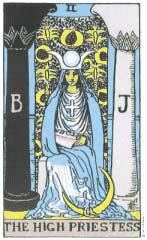
ARIEs March 21 - April 19
This month the card you have dominating your monthly forecast is the fool card. This shows that you are now ready for changes and need to take the challenge of bringing in all the new things that you can into your life. There are some challenges with some interference from a family member, but you have to show strength and courage. You are going to prosper if you stay calm focused and keep going. Make sure you motivate yourself.
tAuRus April 20 - May 20
You need to walk away from something that you have been putting off for a while. You have been very accepting of certain situations, but you now need to just let it go. The card dominating your reading is the Hanged Man. You have put yourself in a state of limbo, and being this way means you do not need to make a decision. Be brave, put your best foot forward and see how great you will feel.




GEMINI May 21 - June 20
You are in a mood to really focus on your finances and make a habit of saving. You have been overspending lately and now is the time to take it easy with the spending. You need to be careful when speaking to colleagues or staff, as there will be hot words exchanged if you are not careful. The card dominating your reading is The Two of Swords. Be aware that you are on the verge of a major decision.
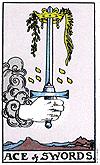




cANcER June 21 - July 20
This month you seem to be trying to fix problems at work or in business. You need to change the way you are working to see better results in the future. You have become very complacent lately. There is a celebration around you. You seem to be feeling a little low with regard to your love life, and the card dominating your reading is the Four of Cups. This indicates that you feel you have let someone down.



LEO July 21 - Aug 22
predictions for NOVEMBER 2013
By NANcy JADE ALthEA www.cosmick-aura.com
LIBRA sep 23 - oct 22
You seem to be feeling the pressure from older members in your family, and there may be some difficult situations to deal with this month. Emotions will be running high. There will be some major changes happening around you in the first half of the month. The cards indicate a sum of money coming your way, and this could be what you have been waiting for. The card dominating your reading is the High Priestess.
scORpIO oct 23 - nov 21
The cards indicate a time of stress around you this month. You may be having some problems with lovers or partners. Communication needs to be better between both of you. There is an indication of an attraction towards someone outside the relationship. There will be great news to do with overseas. Projects or plans may be coming into fruition indicated by the World card here.
sAGIttARIus
nov 22 - dec 21
The cards indicate a time of looking for property or refurbishing your existing one. There is a lot of energy around changes around the home. You are looking at increasing your assets too, so you may look at what is on the market or indeed. Have a deep tissue massage. The card dominating your reading is the Two of Cups, indicating a time to be more romantic and loving.
cApRIcORN dec 22 - Jan 19
The cards indicate a time to find yourself and spend time meditating. This month will be very busy for you with work and new projects coming your way. There will be some frustration with a friend or colleague who will be pestering you for your advice. Your finances will improve over the next few weeks. Saving is your priority. The card dominating your reading is the Eight of Pentacles, so keep up the hard work.
AquARIus Jan 20 - feb 18
You are feeling withdrawn and confused. The cards indicate that this is a time when you are trying to re-assess your life and work. You are also feeling like moving away and living on your own. This is not possible if you are married. Space is what you need right now. The card dominating your reading is the Moon card which confirms the uncertainty around you. You may also be feeling more inclined towards spirituality, which is a positive sign.
VIRGO Aug 23 - sep 22

This month, you will not be feeling great as things are not turning out the way you expected. Someone may have recently become ill or is going through some stress which is upsetting you. You are very keen to make sure your family are all happy and at peace. There seems to be something bothering one of your children, who seems to be having bad dreams. The card dominating your reading is the Judgment Card, so get up and act.
There is a lot of focus on travel and relocation. Your cards indicate that you are looking at changing your city or country. There is a lot of advice being offered to you, it would be best to follow your heart. Be careful of losing your temper as you have been under immense pressure with work or exams. The card dominating your reading is the Two of Wands, looking to the future.
pIscEs feb 19 - March 20
This month you will be in a very romantic mood. There could even be a commitment made in a relationship. Unfortunately, there may be some objection from an older woman in the family. You will feel very confused. The sun card is dominating your reading which shows that you will win with careful speech and kind actions, so keep this in mind. You need to look after your legs.
STARS F o RETELL
cINE tALK
BRAVE cONcEpt, ENGAGING wAR sAtIRE
WAR CHH o D NA yAAR
STARRING: Sharman Joshi, Soha Ali Khan and Jaaved Jaffrey
WRITER/DIRECTOR: Faraz Haider HHHHH
Political satires are easily the most difficult genre of comedy in cinema. They have to serve up a telling lesson to self-serving politicians, while providing audiences with a good laugh. We had Kunal Roy Kapur attempting one of ‘dose’ in The President is Coming
But that’s it. Full credit to writerdirector Faraz Haider for going into the war zone and emerging from the battle-scarred scenario with his sense of humour intact.
War satires are extinct in a country that takes cross-border matters dead seriously. Though War Chhod Na Yaar a very one-sided view of barbed-wire offences, it does nevertheless fire some mirthful missiles at politicians on both sides who make mileage out of the mythical animosity between the two countries. In the middle of the crackling tension of Indo-Pak differences, there suddenly comes the cackling sound of loud laughter breaking the eerie silence of the desert-scape where ammunition is aimed at both ends.
Sitting in No Man’s Land across the barbed fence are the two squadron leaders from both ends played smartly by Sharman Joshi and Jaaved Jaffrey playing cards, exchanging jokes and making light of one another’s country’s ongoing burden of being border-line belligerent. That the film is shot in the Rajasthan deserts serves the film’s locational purpose creating a battleground realistically, if not opulently.
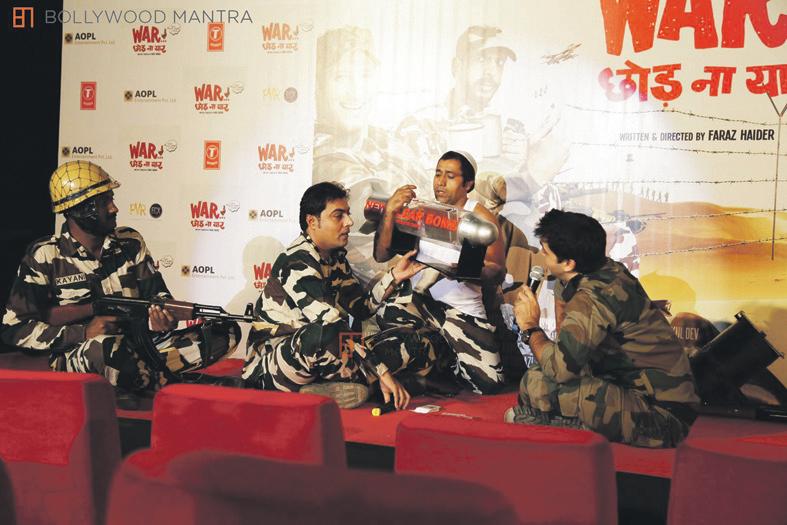
Faraz Haider has scripted a plot that tickles borderline tension. There are passages of breezy bantering between Joshi and Jaffrey. Both actors possess subtle acting skills that they put here to potent use as two army-men who bond across the border even as war escalates overnight. The soldierly bonding over the barbed wires is a heartening thought, not quite executed with the finesse that, say, JP Dutta would have invested into his border-line satire.
War Chhod Na Yaar is a film with a large heart. ‘Hate war, not the warrior’ seems to be the subtitled slogan of this antiwar satire. Rather than taking long shots of battleground images mercifully, the

President’s Yankee-accented aide, ceases to be funny beyond a point.
Not that this sort of stand-up comedy material renders itself effectively to cinematic laughter in the first place. Nonetheless, credit must go to the writer-director for attempting to show the utter futility and the underlining farce that define cross-border aggression.
Some episodes in the film are neatly written. The actors add a layer of conviction to the satire. The underrated
underused Sharman Joshi puts up a convincing show as an Indian soldier trying to keep his and his army’s spirits high in the face of violence. Why don’t we see more of him? Jaaved Jaffery, who was effective as a snarling villain in Besharam, puts up another bravura act as Sharman’s colleague from the other side of the firing line. Soha Ali Khan as a television journalist modelled on Barkha Dutta (not again!) gets into the satirical spirit with ease.
The film has a vast cast of comic
performers. But I must make special mention of Mukul Dev as an Afghani infiltrator, who gets it wrong each time. Mukul’s accent and comic timing are fodder for the funny bones.
Very rarely do we get a chance to smile about the grim reality of war. This film gives a nimble twinkle-eyed satirical slant to the scourge of war. Warm and well-packaged with intelligent performances, War Chhod Na Yaar flounders when it abandons the human aspect to get into the nuclear zone.
Then it’s time to groan.
SUBHASH K. JHA
64 NOVEMBER 2013 www.indianlink.com.au
ENtERtAINMENt
Hunterwali
rides again!
An iconic Aussie heroine of the Indian screen makes a memorable comeback
By USHA RAMANUJAM ARVIND
Long before India opened up its shores to global market forces and certainly well before Bollywood became an international phenomenon, a fearless young Western Australian woman charmed her way into its hearts and homes. Liberalisation and bilateral trade were decades away. Free-spirited, self-made and ahead of her times, this daring woman rose from being a virtual nonentity to a celebrated Bollywood icon.
Meet Hunterwali, the lady with the whip, aka Fearless Nadia (born Mary Evans), best known for her roguish charm, swashbuckling heroics and death-defying stunts. The silent era film goddess was the ‘tough-talking, whip-cracking, action heroine of Indian cinema in the 1930s and ‘40s’.
Her lasting contribution to Indo-Australian cultural scene was celebrated recently, with an electrifying performance of


Ben’s Walsh’s Fearless Nadia. The multimedia spectacle, which debuted at Adelaide’s OzAsia festival last year, was screened in Melbourne. It has also successfully toured major metros in India.
“Fearless Nadia is a wonderful paean to Bollywood and a great night of music,” Festival Director David Malacari stated at the launch of Parramasala 2013 in Sydney.
“Nadia’s biffing and boffing of assorted baddies is great fun, but the music turns it into a must-see event that was a huge success in Mumbai, the home of Bollywood,” he further added.
A world-renowned drummer, Walsh who fronts the eclectic international band Orkestra Of The Underground, entertained audiences with an adrenaline charged live performance.
Featuring 12 Australian and Indian musicians, including Sandy Evans, Shenton Gregory, Bobby Singh, Greg Sheehan, Sangeet Mishra, Sudhir Nayak, Aneesh Pradhan, Vinod Prasanna, Kim O’Sullivan, Matt Ottignon, Eden Ottignon and Daniel Pliner, Fearless Nadia is a musical collaboration steeped in history.
The ensemble incorporated the sounds of the tabla, sarangi, dholak, Indian flutes and harmonium and combined it with the trumpet,
drums, violin, clarinet to make up a spectacular soundscape, with Kathak dancer Shruti Ghosh also taking centrestage.
Paying homage to 100 years of Indian cinema (nowadays better known as Bollywood), high voltage percussions, gravity defying acrobatics by viola player Shenzo Gregorio, slapstick acts by Walsh and Greg Sheehan, and an original score, were some of the added extras as audiences were once again treated to the daring exploits of Nadia.
High-energy visuals from Diamond Queen (1940) have been painstakingly edited and collated by Walsh for Fearless Nadia, before being transferred from its nitrate original to digital format.
“For me, the project is a true labour of love. I have always enjoyed the world of the silent film as it lends itself to the potency of live music,” score composer Ben Walsh told Indian Link after the live performance.
“Dusting off the cobwebs of a nitrate film and infusing a new energy into the movie was an enriching experience,” he added.
“I am truly grateful to Roy Wadia (Wadia Movietone) for trusting me with his family legacy, and believing in me the whole way. For me it was a great honour to bring history from the vault and into the

world once more”.
Walsh, who has been to India several times, first met Wadia in Mumbai while on a concert tour. The chance meeting led to the idea of reincarnating the body of Nadia’s work. The storyline, action and comedy of Diamond Queen instantly appealed to Walsh.
“The action, romance, drama and also the political aspects spoke to me instantly when I first saw the film,” he reminisced. “I could instantly hear the score!”
Elaborating on the background music, Walsh spoke about how the strong Indian and Australian elements have blended into a harmonious mix. “The Indian system of melody and rhythm have been skilfully married into pronounced Jazz elements,” he explained.
“For me it is a theatrical reinterpretation. The music drives the emotion and in turn, the scene itself. And having a live orchestra engages the audience like never before. As a director, I believe I have redirected the whole movie itself. I have put my heart and soul into this black and white world of kooky characters and iconic heroines,” he added.
Fearless Nadia also included passages of solo tabla composed by Aneesh Pradhan.
As the music came alive,
the audience was in raptures, enthralled by the whole sensory experience and transported back in time to the world of the swashbuckling ‘40s, willingly suspending their sense of disbelief. It was a night to remember.
“I have put my heart and soul into this black and white world of kooky characters and iconic heroines”
Ben Walsh
thE BuZZ

SRK, late again!
After annoying the crowd in Sydney by making a typically Bollywood late appearance, Shah Rukh Khan has taken his tardy behaviour back home, keeping his fans waiting for two and a half hours recently. When the superstar finally turned up at the celebration of LUX Chennai Express Contest event in Mumbai, he was profuse in his apologies saying, “I am extremely sorry for coming late. My apologies to the media people. I am not well... I have flu... I was bedridden. I have been travelling a lot... but thanks for all your patience”. He then went on to enact the train scene from his Express with Lux Chennai Express contest winner Zarina. The actor also did few dance moves with the contestants on stage.
SRK also talked about upcoming projects and a bit about his personal life. The actor, who is also shooting for the film Happy New Year, says the film is not a solo hero film. “Happy New Year is not a SRK starrer film. We have an ensemble cast and that is the speciality of the film. Its not a solo hero film,” he said.
Asked if he is playing a Gujarati don in Farhan Aktar’s next release, he said, “No I am not...I have read the script but nothing is finalised”.
However, the one thing that King Khan seemed sure and cheerful about was the newest addition to the family, his young son AbRam. “Everyday is special after AbRam has come home. His health is good now and I am really happy for him. Everyday is festivity at home because of AbRam,” SRK said enthusiastically. Bet he made it home on time!
Priyanka’s into modern mujra
LADIEs IN thE LIMELIGht
India’s nightingale Lata Mangeshkar was recently conferred the first Yash Chopra Memorial Award, in a tribute to the legendary filmmaker Yash Chopra on the eve of his first death anniversary. It is a fitting tribute to the melody queen who has been in the film industry since decades and has made an immeasurable contribution to its music industry. Lata, who started her singing career in 1942, has continued singing for over seven decades, recording songs for over a thousand Hindi movies besides singing in 36 Indian and foreign languages. She has been conferred several national and international honours, including Bharat Ratna, India’s highest civilian award, three national film awards and the One Time Award for Lifetime Achievement in 2008 to commemorate the 60th anniversary of India’s Independence.
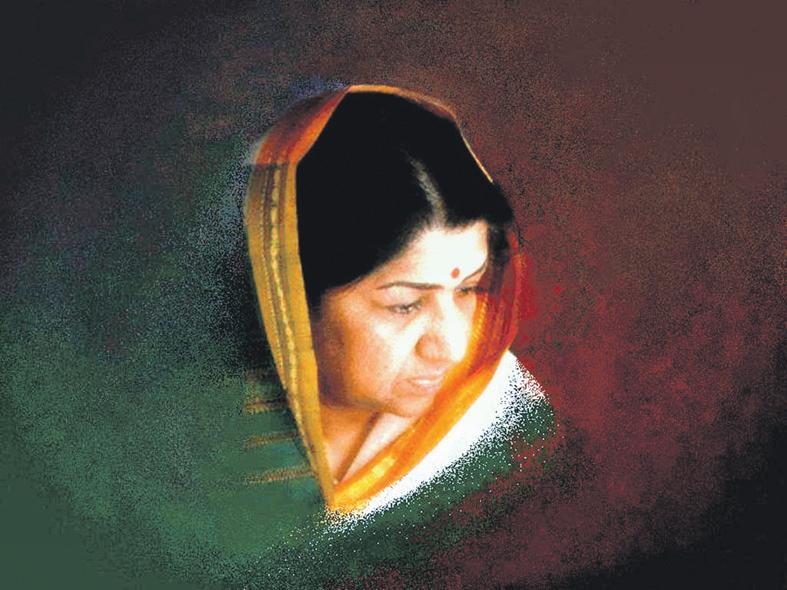
And now Bollywood is buzzing as a few of its veteran actresses are also honoured for their ‘active roles’ in the film industry. Padmini Kolhapure, Zarina Wahab and Rati Agnihotri were honoured in Lucknow recently, in recognition for their role in highlighting the strengths of women. Other than the trio, among other actors felicitated were Nimmi, Anita Raj and Rameshwari. They were presented with an award at an event organised by Friends India, a social organisation. Looks like the ladies are getting a well-deserved spot in the limelight!
Actress Priyanka Chopra is tremendously chuffed these days, having done an item song in Sanjay Leela Bhansali’s Ram Leela, which she describes as a modern mujra which has Indian vibes with a western touch. But complicated, but there you are! “The song is very different and special because I am a huge fan of Mr Bhansali. It’s a modern mujra which you all have not seen for a long time. It’s a mujra, but modern. It’s got Indian music and vibes, but still western and contemporary,” said Priyanka, trying somewhat unsuccessfully to explain. “It has got a different look, different form of dancing and I didn’t have time to rehearse. I used to rehearse at night,” the actress added.

Priyanka’s now taking her singing skills to the next level, hinting that she would love to playback for other heroines. She feels it would be a fun experience. “I want to playback for some other heroine. I think it will be very interesting. If I like the song, I am okay with (doing) it, but I should like the song. I am ready to playback for any actress,” Priyanka said recently.
The actress, who will next be seen in Krrish 3, has been experimenting with different genres of films because she likes to take risks. “I want to do different things. I am a risk-taker I want to be a game changer in my personal career. I don’t want to follow anybody’s footsteps.
I did music... I want to change the game. Maybe I will fail, but at least I want to try,” she said. So far, Priyanka has launched two international singles, In my city and Exotic. Well, let’s see how fans react to her modern mujra. Perhaps there’s more music in Priyanka…
Slain Shahid immortalised on screen
Khalid Azmi became emotional after watching a latest screening of Hindi film Shahid recently, based on the life of his brother, slain lawyer and human rights activist Shahid Azmi. “Our family has gone through a lot. It’s a very emotional moment for us. I have watched this film before, and on watching it again with my family, I got very emotional,” Khalid said. “The film (tells) a part of my life, so it is very realistic and everything comes alive before my eyes,” he added.
Shahid which stars Rajkumar Yadav in the lead, tells the story of Shahid Azmi, who was the defending lawyer of 26/11 Mumbai terror attacks co-accused Faheem Ansari. Shahid was shot dead in his office in 2010. Khalid says almost 95 percent of the film is accurate. “I provided them with all the information. I also spent a lot of time with Rajkumar and told him how Shahid used to be. They shot a few portions in his office and his colony,” he said. Directed by Hansal Mehta, Shahid released recently. Sounds like a must-see movie.
For Sami, India is like home
Pakistani singer Adnan Sami, who was in news for allegedly ‘overstaying’ in the country, says India is like a home to him. Britain-born Sami was issued a notice by the Mumbai police recently, demanding an explanation for overstaying. But it was later revealed that the singer-composer had been granted a three-month visa extension the day his earlier document had expired. Sami can’t quite figure out what the fuss is all about. “I have been living here (in India) for the last 14 years.

66 NOVEMBER 2013 www.indianlink.com.au
Up-TO-dATe news On whAT’s hOT And hAppening in B ENtERtAINMENt
AdnAn SAmi
It has been my work place since then. I have not spent (as much) time anywhere else as much as I have spent here in India,” Adnan said in an interview. “So I am attached with this country. It is like a home to me,” he added. He seemed overjoyed by the visa extension, so it looks like Sami is here to stay!
Shilpa and Raj Kundra
snippets
Businessman Raj Kundra says he is in talks with Hollywood companies to turn his debut book How Not To Make Money into a film. “I just love films. I write as if I am watching a film. Hence, in the head it feels like a film. It has the makings of a film and we are in talks with various Hollywood companies, but it’s too early to say anything,” Raj said at the launch of his book recently. “There has been a lot of interest (regarding the film based on the book) and the day it happens, we will let you know,” added Raj, who is married to Bollywood actress Shilpa Shetty. Now why on earth didn’t he approach Bollywood to make such a movie?
Supporting her husband, Shilpa said, “I definitely see it becoming a film... a



Hollywood film for sure. Raj likes to think big”. Certainly, if he couldn’t even consider the film industry at home instead of going overseas. “Let me tell you a secret. Raj is even more filmy than me. Raj is as filmy as you can get. He is the ideal Raj, like Raj from Dilwale Dulhania Le Jayenge. For me, it is not surprising that it (book) is a little cinematic because that is how Raj thinks,” Shilpa said. Tongue in cheek, don’t you think? The power couple will be producing Dishkiyaaoon soon, but Shilpa has no immediate plans of coming back to face the camera. She says she will start acting only once her son Viaan begins to understand her work. She said,
“(I will take) At least another year-anda-half... till Viaan is able to communicate with me and understands (my) work. Then may be I will think of doing a film”.
Until then, the 38-year-old said she happy working on the small screen and with endorsements. Shilpa says she has taken a sabbatical from the movie world as films are too time consuming.

“Honestly, it is a self-imposed sabbatical. My priority definitely is Viaan at the moment. I haven’t thought about films really, it’s just too time consuming,” Shilpa
whO wORE It BEttER?
said. The film stars Harman Baweja and Sunny Deol, and will introduce newcomer Ayesha Khanna. That’s all the news on the Kundra front, folks!
Nandita Das takes on Spanish project
Actress Nandita Das, who will be seen with husband Subodh Maskara in upcoming Spanish film Traces of Sandalwood, will start shooting in a month’s time. The film will be shot in India and in Barcelona.
Speaking at the inaugural ceremony of Mumbai Film Mart (MFF), which endeavours to find completed and under-production Indian films potential international buyers, Nandita said, “I will be going to Barcelona in a month from now to start shooting for my film”.
“This film is called Traces of Sandalwood It’s an all women crew and that’s going to have an interesting dynamics because it’s wonderful to see a women cinematographer and women art director behind the camera. It will be shot in Barcelona and Mumbai,” added Nandita, who has more than 30 films to her credit.
Nandita, who has directed criticallyacclaimed Firaaq, believes film festivals create more space for independent films.
cAptION cONtEst
What’s the chitchat here between SRK and Madhuri Dixit? Send in your responses to win@indianlink.com.au and win a surprise prize

Share your views with us on our Facebook page
“I have done over 30 films and most of them have been in the independent space. I don’t have DVDs of most of the films because many of them couldn’t be released. Many of the independent films suffered the most because of not having the skills or platform to release their films,” added Nandita. “While I don’t understand the market world still because even I had to face similar challenges for my film Firaaq. It’s wonderful that film festivals are presenting an opportunity for several independent films. More the number of festivals, merrier it is for young filmmakers as well audiences,” she said. Nandita was invited as a special guest to support MFF, which concluded recently. Six Indian films namely Hunterrrrr, Haraamkhor, The Unseen Sequence, Placebo, Illai and Albert Pinto Ko Gussa Kyu Aata Hai are being exhibited through an initiative called India Project Room, a subsidiary of MFF. That’s certainly a positive heads up for Indian cinema. Good on you, Nandita!
LAst IssuE cAptION cONtEst wINNING ENtRy
What’s the chitchat between Amitabh and Mithun?

Amitabh: Mithun, I present to you the Senior Citizen Black Hair Dye award. Mithun: I follow in your footsteps, Amitji.

Mark D’Souza Armadale, Perth
Mark wins a CD of new Hindi film War Chhod Na Yaar
NOVEMBER 2013 67 INDIAN LINK
PriyAnkA ChoPrA
ShilPA Shetty
Srk
Diana Penty or Emma Stone in Bottega Veneta?
Fruit and fireworks
With Diwali just around the corner, my thoughts invariably go back to my childhood and our myriad of festival celebrations back in Mumbai. Of these, a couple of episodes stand out clearly from the others, simply because they enlivened even more, what was normally an interesting festival.

My dad worked for a bank, and the week preceding Diwali was always a highly anticipated one as he would come home bearing various gift boxes from generous clients, usually containing an assortment of dried fruit and nuts, or mouth-watering mithai These boxes would be attacked by the family; we were all relatively healthy eaters, and the first to go would always be the cashew and pistachio nuts.
Soon, all that would be left behind were a few dried dates and sultanas, which no-one particularly enjoyed, not even the maids. Because our household was one that saw an influx of visitors over weekends ranging from family to hanger-ons looking for a free meal that my kind parents wouldn’t refuse, one year my dad insisted that a few of these gift boxes should be
kept aside to re-gift, as we were clearly being spoiled for choice. My older sister was the only one who vociferously objected to this generosity, perhaps because she had a penchant for nuts, being one herself. She developed a technique by which she would gently lift the cellophane paper that covered the compartments in the box, and would replace the nuts with the unpopular, leftover sultanas. She would then glue back the cellophane paper, replace the lid of the box, and to ensure that she hadn’t been detected, she would seal the box with sticky tape at each end. I wonder how many recipients of those boxes were grateful to the dubious generosity of my family.
Despite living in a predominantly Catholic area (indeed, the locality I lived in was called ‘Catholic colony’), when it came to Diwali, we put aside our Christian snobbery and rivalled the neighbouring ‘Hindu’ gangs with a collection of fireworks that was on par with theirs in cacophony and splendour.
Each Diwali my dad would religiously travel to a special fireworks shop in Muhammed Ali Road, owned for generations by a Muslim family, and would spend a good bit of his hardearned festival bonus on buying an array of rockets, sparklers, fountains, Catherine wheels and, my favourite, since I was (and am) an irredeemable funk, little black pellets called ‘snakes’ which when lit, flared up into a tube of black
carbon with an odious vapour. They were stinky, but safe.
I have always been a reluctant admirer of fireworks and as a child the nearest I could get to firecrackers was reluctantly holding a lit sparkler balanced at the end of a stick, thanks to the ingenuity of my mother, whose coaxing had also got me out of bed with pillows over my head. I loved the colours and lights that accompanied Diwali, but not the sound. And Bombay being an enthusiastic city, always began its noisy celebrations at least two weeks before the festival. Loud ‘bombs’ went off at 3am, literally shaking the neighbourhood on its foundations, and all most people did was rollover in their sleep.
One of my most memorable Diwali celebrations however, was right at home. Our ground floor flat had a balcony overlooking a garden that ran around the premises, the abode of many childhood adventures and home to a few cats. As is typical with homes in the city, we had one part cordoned off with old furniture, a bookshelf with moulding books, and various bric-a-brac that noone ever seemed to find the need to throw away.
My sister as usual, the tomboy of the family, often took her enthusiasm for life several notches higher when it came to fireworks on Diwali, and was the one to light the rockets, Catherine wheels, fountains, etc., while the rest of the family watched admiringly from a distance. Now this Diwali,

finding herself overwhelmed by the abundance of fireworks, decided to sneak in a few early ones before we went out to add our stash to the communal street one.
The problem being was that lighting any of them in the garden would alert the neighbourhood to a private party, besides scaring the cats. And so she decided to light them on the balcony. All went well as sparklers were lit and the maids joined in to watch the fountains shoot up in wonderful hues of gold, blue and orange, leaving behind only faint scorch marks on the ceiling. The fun really began when she started lighting the Catherine wheels. Now these annoying things don’t just spin in a small circle, sometimes they take on a life of their own and traipse all over the floor.
One particularly enthusiastic specimen did just this and with its dying whirl, went straight under the pile of junk at the far end of the balcony. “Don’t worry,” said my sister with admirable nonchalance, “It will go out by itself”. A few minutes later, a particularly acrid smell began to fill the balcony, and flames began emerging from the junk.
Fortunately our stalwart maids hotfooted to the bathroom and soon buckets of water were poured over the flames, while the rest of us gaped in astonishment. Luckily no one was hurt, and the subsequent stories of heroic rescue would have, in today’s day, made the media frenetic.
“Don’t worry,” said my sister with admirable nonchalance, “It will go out by itself”. A few minutes later, a particularly acrid smell began to fill the balcony, and flames began emerging from the junk
We however, had to be content with sheepishly answering curious neighbours’ questions. Long after the fire was put out, my mother still poked at the mess of ash, water and debris to convince herself that there were no stray flames that may unexpectedly come to life again. Our stash of fireworks was confiscated for a day, my sister got a mild telling off (it was, after all, Diwali), and the maids earned their Diwali baksheesh
68 NOVEMBER 2013 www.indianlink.com.au
BACKC h At
Memories of Diwali are incomplete without episodes that contain these two essential symbols of celebration
Loud ‘bombs’ went off at 3am, literally shaking the neighbourhood on its foundations, and all most people did was rollover in their sleep
SHERyL DIXIT


OCTOBER 2013 69 INDIAN LINK

70 OCTOBER 2013 www.indianlink.com.au $ 79 99 UNLIMITED CALLS to: UNLIMITED CALLS TO INDIA
Ethnic India wishes everyone a very Happy Diwali and Prosperous New Year


INDIAN LINK

72 OCTOBER 2013 www.indianlink.com.au

















































































































 By CHITRA SUDARSHAN
By CHITRA SUDARSHAN


































 By SARoJA SRINIVASAN
By SARoJA SRINIVASAN
















































